Executive Summary
As 2023 comes to a close, I am once again so thankful to all of you, the ever-growing number of readers who continue to regularly visit this Nerd's Eye View Blog (and share the content with your friends and colleagues, which we greatly appreciate!).
We recognize (and appreciate!) that this blog – its articles and podcasts – is a regular habit for tens of thousands of advisors, but that not everyone has the time or opportunity to read every blog post or listen to every podcast that is released from Nerd's Eye View throughout the year. As many of you noted in response to our Reader Surveys, most of you choose which content to read or listen to based on headlines and topics that are of interest (and skip the rest). Yet in practice, this means that an article once missed is often never seen again, 'overwritten' (or at least bumped out of your Inbox!) by the next day's, week's, and month's worth of content that comes along.
Accordingly, just as I did last year, and in 2021, 2020, 2019, 2018, 2017, 2016, 2015, and 2014, I've compiled for you this Highlights List of our top 22 articles in 2023 that you might have missed, along with a few of our most popular episodes of "Kitces & Carl" and the "Financial Advisor Success" podcasts. So whether you're new to the blog and #FASuccess (and Kitces & Carl) podcasts and haven't searched through the Archives yet, or simply haven't had the time to keep up with everything, I hope that some of these will (still) be useful for you! And as always, I hope you'll take a moment to share podcast episodes and articles of interest with your friends and colleagues as well!
Don't miss our Annual Guides as well – including our list of the "10 Best Financial Advisor Conferences To Attend in 2024", the ever-popular annual "2023 Reading List of Best Books For Financial Advisors", and our increasingly popular Financial Advisor "FinTech" Solutions Map and AdvisorTech Directory!
In the meantime, I hope you're having a safe and happy holiday season. Thanks again for the opportunity to serve you in 2023, and I hope you enjoy all the new features and resources we'll be rolling out in 2024 (and beyond!), too!
Financial Planning Value
Are Financial Plans Getting Too Comprehensive: How The "Sledgehammer Of Value" Isn't Actually Paying Off – Many financial advisors take pride in the comprehensive nature of the advice they provide to clients and use the variety of services offered as a point of differentiation between themselves and other types of advisors. Though, at some point, covering a large number of financial planning topics can eat into an advisor's time, which is problematic if clients won't pay substantially more to receive that more comprehensive advice.
The results of the 2022 Kitces Research study on "How Financial Planners Actually Do Financial Planning" show that financial plan comprehensiveness has increased over time as advisors try to do more and more for clients to validate their fees, hitting them with a proverbial "sledgehammer of value". In the research data, this is reflected in a big uptick in advisors doing the most comprehensive plans: 54% of respondents offered 'Extensive' plans (with at least 13 planning components) in 2022, up from 35% in the 2020 edition of the study and 39% in 2018. Unsurprisingly, service teams producing plans covering the widest breadth of topics tend to spend more time preparing them, according to the Kitces Research data, and this appears to come at a financial cost for these advisors, as those producing Extensive plans had lower median revenue per advisor and take-home income compared to those producing less-comprehensive plans.
Ultimately, the key point is that as advisors increasingly provide comprehensive plans that examine a wider range of planning topics for their clients, the question of whether using the "sledgehammer of value" meets both the specific needs of clients as well as supporting a healthy advisory business (by being able to charge effectively for the time it takes to produce such lengthy plans) becomes more important. And for advisors who do feel overwhelmed, there are a variety of ways to reduce the burden of providing the most comprehensive plans, from focusing on the advisor's unique value proposition to outsourcing financial plan preparation tasks to changing their approach to plan delivery, which can all help advisors reduce the time they spend on plan preparation while still providing a high level of service to their clients!
The Growth Of Collaborative Financial Planning – And Decline Of "The (Written Financial) Plan" – As financial planning software has gotten more sophisticated and capable over time, "The Plan" has gotten longer and longer with additional (optional) components, giving financial advisors significant latitude when it comes to how they create and deliver plans.
While advisors have traditionally delivered their plans in static, written format, Kitces Research data indicate that a "collaborative" approach to plan development (where planning software is used as an interactive, collaborative tool in client meetings) has become increasingly popular, used by 47% of respondents, compared to 32% in 2020, more than any other planning style (e.g., custom written plans). While the potential revenue and income benefits of a collaborative plan approach are mixed, advisors producing collaborative plans also tend to update client plans more frequently and have more client touchpoints throughout the year. Which could lead to better client retention over time (and potential client amenability to fee increases), given the ease of making plan adjustments and increased engagement the advisor can facilitate.
Notably, advisors considering a collaborative approach to financial plan development and delivery (or who have already implemented such an approach) have a range of software options that can enhance the collaborative planning experience (e.g., eMoney's Decision Center, MoneyGuide Pro's Play Zone, and RightCapital's interactive features). In addition, staff members included in the planning conversation can further enhance the delivery of collaborative plans (e.g., by running the technology while the advisor guides the conversation).
Altogether, as technology has improved and virtual meetings have gained popularity among advisors (and their clients), many advisors have adopted a collaborative approach to financial plan production and delivery. Which can create a more interactive planning experience (compared to static written plans) and result in more frequently updated plans, while potentially increasing client engagement and improving client retention!
Creating Client Service Calendars That Demonstrate Ongoing Advisor Value – While it can be easy for financial advisors to recognize the wide range of ways they add value for clients throughout the year, clients themselves might not be aware of what their advisors do for them behind the scenes outside of their annual meetings (e.g., rebalancing their investment accounts or reviewing their insurance policies). Without knowledge of this 'shadow work', clients might not recognize the full breadth of responsibilities their advisors (and the firm's back-office staff) are handling on their behalf to justify their fee.
One of the ways advisory firms can help solve this dilemma is to implement a client service calendar, which outlines key services being provided to clients during each month of the year. This not only gives clients a better idea of the actual work involved in financial planning that goes on outside of meetings but also helps them understand when the work happens during the year (and can show regulators the specific services provided by advisors to ensure that these services justify client fees).
Once an advisory firm identifies what it wants its service calendar to do (e.g., demonstrate ongoing value and serve as a client engagement tool) and chooses an appropriate style that supports its calendar's function (e.g., a bi-monthly calendar showing ongoing client services), it can then consider how to actually create its client service calendar by deciding what to include in it and how to produce it, whether using available in-house technology tools or using an outsourced solution.
In the end, client service calendars not only allow firms to better organize and display their service offerings but also show clients (and regulators) the full range of services being provided throughout the year. And by clarifying when planning services will be offered and when events relevant to clients will take place, advisory firm owners make the financial planning experience more tangible and create structure in their processes, all while giving advisors time to 'go deeper' in serving their clients!
Retirement
Implementing Retirement Income Guardrails To Facilitate (The Right) Spending Raises And Spending Cuts – When it comes to retirement income planning, one popular technique is the use of 'guardrails', which set an initial monthly withdrawal rate that can be later adjusted as the size of the client's portfolio changes. This strategy is valuable because it generally allows for higher initial withdrawal rates than more static approaches that don't accommodate clients willing to adjust their spending in retirement. However, given the technical nature of the guardrails approach, advisors can find it challenging to explain to prospective and current clients how it will work in practice.
To start, it is typically preferable to explain guardrails to prospects and clients in dollar terms rather than in percentage terms (e.g., telling the client they can safely withdraw $4,500 each month rather than saying they will have a 5.4% annual withdrawal rate). Further, given that a client's monthly distributions will almost certainly change at some point when implementing a guardrails strategy, they must understand what this means in practical terms (both in the case of upward and downward adjustments to their withdrawals).
One way to prepare clients for a potential reduction of their monthly income (which is inherently more challenging for a client to accept than an income increase) is to give advance warning that a cut might be necessary if their portfolio declines further (and to encourage them to consider where they would cut back if needed). In the case of a market downturn, advisors can wait an agreed amount of time (e.g., 2 quarters) after the client's portfolio balance falls below the lower guardrail before implementing an income reduction, as this can give the market time to recover and preclude the need to make any adjustment at all. Alternatively, if the portfolio balance declines due to excess distributions (e.g., a lump-sum withdrawal to buy a new car), advisors can advise clients on whether withdrawals will bring them closer to (or even dip below) the lower guardrail and the implications for their future monthly income.
Ultimately, the key point is that while a guardrails strategy can help clients maintain sustainable withdrawal rates throughout retirement, ensuring that clients understand how the strategy applies to them – in practical terms – is essential for success!
How Different Monte Carlo Models Perform In The Real World: Assessing Quality Of Predictiveness In Retirement Income Forecasting Models – When planning for retirement, it's effectively impossible to precisely forecast the performance and timing of future investment returns, which in turn makes it challenging to accurately predict a plan's success or failure. And while Monte Carlo simulations have made it possible for advisors to create retirement projections that seem to have a reasonable basis in math and data, there has been limited research as to whether Monte Carlo models really perform as advertised – in other words, whether the real-world results of retirees over time would have aligned with the Monte Carlo simulation's predicted probability of success.
By conducting research assessing the performance of various Monte Carlo methodologies, Income Lab has suggested that, at a high level, Monte Carlo simulations experience significant errors compared to real-world results. Historical and Regime-Based Monte Carlo models tend to outperform Traditional models and models with Reduced-Capital Markets Assumptions (Reduced-CMAs) not only in general, but also throughout most of the individual time periods tested. These models had less error across many types of economic and market conditions. Furthermore, compared with the Traditional and Reduced-CMA Monte Carlo methods, the Regime-Based approach more consistently under-estimated probability of success, meaning that if a retiree did have a 'surprise' departure from their Monte Carlo results, they would be more likely to have 'too much' money left over at the end of their life – which most retirees would prefer over turning out to have not enough money!
In sum, although Historical and Regime-Based Monte Carlo models seemed to perform better than the Traditional and Reduced-CMA models, advisors are generally limited to whichever methods are used by their financial planning software (most of which currently use the Traditional model). However, as software providers update their models, it may be possible to choose alternative, less error-prone types of Monte Carlo simulations – and given the near-certainty of error with whichever model is used, it's almost always best for advisors to continually revisit the results and make adjustments in order to take advantage of the best data available at the time!
Effective Implementation Of A Backdoor Roth Strategy: Detailed Nuances, IRS Form 8606 (And When It's Even Worth Doing) – While backdoor Roth conversions are a well-known tax planning strategy, many individuals have either missed the opportunity to use it or implemented it incorrectly – which, left uncorrected, can result in unnecessary headaches, taxes, and even penalties – presenting an opportunity for advisors to add significant value for their clients.
The backdoor Roth strategy can be valuable for clients whose high income levels preclude them from making regular contributions to a Roth IRA. As while income phaseouts apply to contributions made to a Roth IRA, there are no such limitations on contributions made to a traditional IRA, nor on conversions from a traditional IRA to a Roth IRA (since 2010). Thus, the strategy itself consists of a 2-step process involving 1) a contribution (either deductible or non-deductible) made to a traditional IRA, followed by 2) conversion into a Roth IRA. While this process might seem relatively straightforward, there are many reporting requirements for non-deductible IRAs (through IRS Form 8606) and numerous IRS rules around timing and accounting (e.g., the IRA Aggregation Rule) that can quickly turn this seemingly simple strategy into a literal lifetime of extra paperwork filing required of the taxpayer if completed incorrectly.
To avoid this situation, before recommending a backdoor Roth, advisors need to make sure they know about every IRA dollar (everywhere in all accounts), review prior tax returns for Form 8606, and confirm that there will not be any rollovers during the remainder of the current year. For clients with a tax-free basis in an IRA, options to remove the taxable gain portion (and become eligible for a 'clean' backdoor Roth) include converting the balance to a Roth (which could be done over multiple years) or rolling the pre-tax funds into a company retirement plan or Solo 401(k) plan (though not a SIMPLE or SEP, as they are lumped in with traditional IRAs for the pro-rata rule).
Ultimately, the key point is that while backdoor Roth conversions can be a valuable strategy, they come with significant rules and nuances that, if not fully understood, have the potential to cause onerous tax complications for clients in the future. Which means that advisors can add significant value by working together with clients and their tax preparers to ensure that the backdoor RIA process is completed correctly!
Taxes
Pass-Through Entity Taxes: Mechanics, Considerations, And Planning Opportunities For Navigating SALT Cap Workarounds – The 2017 Tax Cuts & Jobs Act introduced a $10,000 limit on the State And Local Tax (SALT) deduction that was previously available for taxpayers who itemized their deductions. In response to the new deduction limit, many states have enacted laws creating a new Pass-Through Entity Tax (PTET) designed to help owners of pass-through businesses (partnerships, LLCs, and S corporations) avoid the limitation and preserve the deductibility of their state tax payments. Nevertheless, the decision of whether to make a PTET election can depend on a taxpayer's individual circumstances.
At a high level, PTETs work by allowing business owners to elect to pay state taxes on their business income – which are traditionally paid on their individual tax returns – from the business itself. This shifts the business owner's state tax payments from being a personal expense (and subject to the $10,000 SALT deduction limit for Federal tax purposes) to being a business expense that is fully deductible from Federal income. The business owner then gets a state tax credit against their individual tax liability to partially or completely offset their share of the tax paid by the business.
But while the simple description of PTETs might make the decision to elect one seem like a no-brainer, in reality, there are myriad considerations at play that mean a detailed analysis is generally required before deciding to make an election or not. These include weighing any additional state tax that must be paid against the Federal tax savings gained through the strategy, as well as considerations for businesses that operate in multiple states, such as potential additional filing requirements (if the taxpayer would not have had to file in a certain state were they not using the PTET strategy) and whether the taxpayer's home state will give them credit on their individual tax return for entity-level taxes paid to another state (which might result in the business income being taxed by 2 states at once if the credit isn't allowed).
In the end, for a subset of taxpayers – namely high-income owners of pass-through businesses in high-tax states who preferably do business in only 1 or a small number of states to reduce the overall complexity – PTETs can provide an opportunity for significant Federal tax savings. Which means that advisors who can help their clients with tax planning strategies to take advantage of PTETs – starting with determining when it's really worthwhile to do so – can provide significant value given the complexity of the decision!
Offering Tax Preparation As A (Solo) Advisor: How To Attain Designations And Create A Schedule By Next Tax Season – Traditionally, financial advice and tax preparation have existed as 2 related but separate services, given the time it takes to prepare returns and because many financial advisors don't hold the necessary credentials (e.g., CPA, EA, or JD) to both prepare tax returns and represent clients before the IRS. Nevertheless, for (solo) advisory firm owners, who are largely able to decide for themselves how to provide value for their clients, offering tax preparation can be a way to provide a service that is in demand from many clients (particularly at a time when there is an acute shortage of available tax preparers on the market), while adding to the year-round value the advisor is providing and deepening the client-advisor relationship.
Although it can take as long as a year to get fully set up to prepare tax returns – from obtaining a designation such as the EA to deciding on pricing and software to developing processes and workflows to streamline tax season as much as possible – advisors may find that many of the tools they use for their advisory business (such as CRM, data gathering, and electronic signature software) can also be used for tax preparation, and that their knowledge of their clients' financial and tax situations makes it possible to streamline the process even further (e.g., by tailoring client data-gathering worksheets to focus on the information that is relevant to a client's tax situation). In addition, by integrating tax preparation into the firm's client service calendar and clearing space during tax season to focus full-time on tax preparation, advisors can ensure they can contain this work to a reasonable number of hours.
In the end, offering tax preparation can be seen as a way for advisory firms to use their existing tools and expertise to enhance the year-round value they provide. Which ultimately means that it could be well worth the investment in time and resources given how valuable a service tax preparation is to many clients!
Investing
Why International Diversification Is Still The Prudent Strategy (While Keeping Behavioral Biases, Risks, And Results In A Healthy Perspective) – As the U.S. stock market has, on average, outperformed international equities over the last 15 years, many investors have argued that international diversification is a poor allocation of dollars that would otherwise be earning more in the U.S. market (though this is an example of both recency bias [overweighting the importance of recent events over those that occurred farther in the past] and the tendency to confuse the familiar with the safe). Nonetheless, despite recent market trends, there remains a legitimate case to be made for international diversification.
First, international investing can provide valuable diversification benefits for a portfolio. For example, while the worst-case real returns for individual countries tend to correspond with severe declines across all countries globally, these similarities tend to deteriorate over time (as different countries naturally recover at different rates). In other words, while global diversification may not necessarily provide protection from an initial crash, it does create the potential for a significantly faster recovery. And this behavior tends to be more pronounced with longer time horizons – which are ultimately more relevant for investors with long-term wealth goals.
In addition, current valuations suggest that international markets might be more attractive than the United States in the years ahead. For instance, as of March 2023, the CAPE 10 (a price-to-earnings metric designed to assess relative market valuation that is especially insightful when it comes to long-term returns) suggested that, if valuations do not change, investors can reasonably estimate EAFE (i.e., Europe, Australasia, and the Far East) markets to outperform the S&P 500 by 2.2% annually over the long term.
Ultimately, the key point is that when evaluating for diversification, many investors can be prone to behavioral biases that preclude them from maintaining a well-diversified, risk-appropriate portfolio that relies on a mix of U.S. and global investments. But by helping clients develop a clear understanding of the actual risks of diversification and a healthy perspective of historical market performance, advisors can prepare them to stay disciplined and focused on long-term results, ending out as both more informed about and more insulated against inevitable market dips!
Factor Investing And Its (Behavioral) Persistence: Facts And Fiction About The Zoo Of Factors – In the early 1990s, the release of a landmark study by Eugene Fama and Kenneth French introduced the concept of "factors" beyond beta (i.e., a stock's riskiness compared to the overall market) that could influence a stock's performance. Though Fama and French's study focused on 2 factors (size and value), investment research in the subsequent 30 years has identified hundreds of additional factors that investors can use to adjust their return opportunities and expectations in constructing diversified portfolios.
Although the rise of factor-based investing has created many possibilities for advisors to add value by optimizing the risk and return profiles of their clients' portfolios, the explosion in the number of potential factors creates its own new challenges, from determining how to evaluate the factors themselves to deciding which ones are really useful in making investment decisions. As it turns out, when filtering the "zoo of factors" down to only those that have had explanatory power to predict above-market returns (as well as that meet a series of tests for persistence, pervasiveness, robustness, investability, and the logic of how they operate), there are really only a handful of factors that are arguably worthy of investment (including size, value, momentum, quality, profitability, and quality for equity; as well as term and credit quality for fixed income), which make it much more manageable for advisors and investors to implement a sound factor-investing strategy.
In sum, while investment risk is impossible to eliminate, factor-based investment strategies have been shown by a wide body of data to create excess returns without adding to a portfolio's overall risk. And so, while factor investing isn't a panacea and can itself be prone to long periods of underperformance, the evidence has shown that it can reward investors who are willing to stick with it!
Practice Management
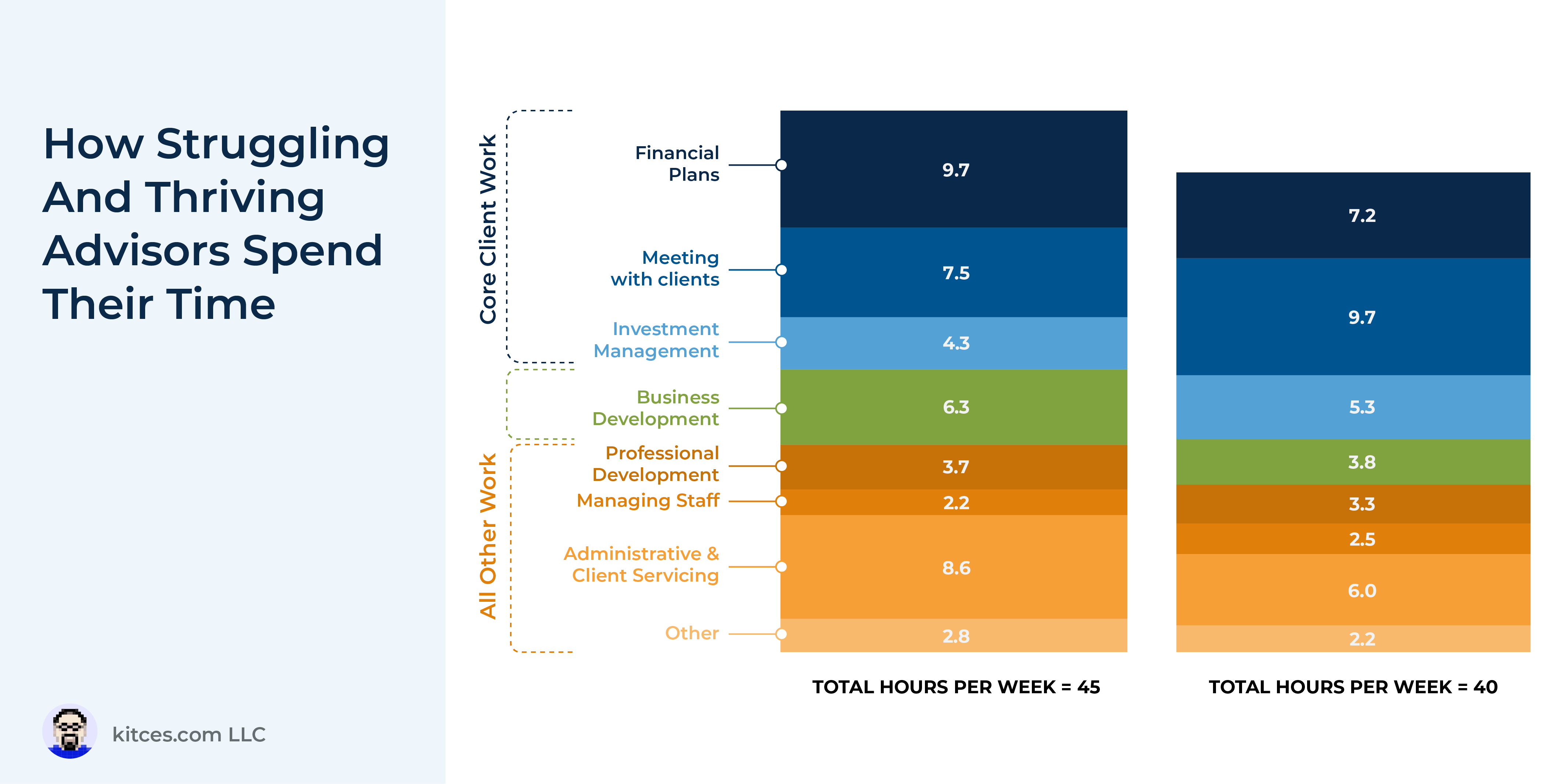 Can Time Blocking Make Advisors Happier And More Efficient? – One of the most important aspects of emotional wellbeing is having a feeling of control over one's time. Indeed, financial advisors often describe one of the benefits of financial planning as helping people take control of their time by giving them the financial freedom to do what they enjoy. Likewise, for advisors themselves, Kitces Research on Advisor Wellbeing has shown that one of the ways to stay happy and thriving is to have the ability to spend time doing what one finds most valuable or fulfilling.
Can Time Blocking Make Advisors Happier And More Efficient? – One of the most important aspects of emotional wellbeing is having a feeling of control over one's time. Indeed, financial advisors often describe one of the benefits of financial planning as helping people take control of their time by giving them the financial freedom to do what they enjoy. Likewise, for advisors themselves, Kitces Research on Advisor Wellbeing has shown that one of the ways to stay happy and thriving is to have the ability to spend time doing what one finds most valuable or fulfilling.
One strategy advisors can use to gain autonomy and spend more time on fulfilling client work is time blocking – i.e., blocking off stretches of time in one's calendar for specific tasks or even for a single project. Creating this focused time not only helps eliminate distractions and inefficiencies caused by frequently bouncing between tasks; it can also make the advisor more efficient and effective at their tasks when they are immersed and engaged in their work without interruption.
Potential ways to implement time blocking include designating 'Theme Days' (e.g., giving each day of the week a specific purpose), creating an 'Ideal Week' consisting of both business and personal goals, or 'Surge Meeting' schedules (e.g., blocking off certain months or weeks of the year for advisors to get in all their client meetings, freeing up the rest of the year for other projects or even for time off).
Regardless of the method, time blocking works best when the advisor can remain undistracted by other tasks. This might require some creativity in finding ways to eliminate distractions and organize tasks to ensure they are dealt with at an appropriate time rather than buried in an inbox. Ultimately, though, with some fine-tuning (and practice!), time blocking can be the path to achieving greater autonomy – and better wellbeing! – in the year ahead.
How A 3-Person Team Optimizes Advisor Capacity For Firm Growth – When an advisor runs their own solo advisory firm, their capacity to meet with current and prospective clients is limited to the extent that they are also responsible for all of the non-client-facing tasks of running their firm. Which may not be a serious limitation when they are just starting out and don't have a lot of clients to serve, but as the firm grows, they will eventually run out of time available for working with clients – at which point, it becomes necessary to decide whether to stay a solo firm (without taking on more clients) or to hire support staff to free up more time for the advisor/owner to prioritize client work and optimize advisor capacity.
Data from the 2022 Kitces Research Study on "How Financial Planners Actually Do Financial Planning" provide some answers about what advisors can expect when going beyond a solo practice, shedding light on the impact that hiring has on advisor capacity. For instance, the study found that while 3-person firms (often consisting of a lead advisor, an Associate Advisor, and a Client Service Associate) were able to serve more clients per lead advisor (96) than solo firms (40) and 2-person firms (70), they also led firms with 4 employees and beyond (which often include a second lead advisor) in terms of the number of clients per lead advisor, suggesting that a 3-person team really seems to be the sweet spot where advisors are able to maximize their capacity!
In the end, what's most important for advisors looking to hire is to have a plan for growth so that the high overhead cost of employees doesn't erode the firm's profits until the firm is able to add enough revenue to make up the difference. Fortunately, what the data show is that hiring can open the door for this growth by boosting the advisor's capacity and (as is presumably the primary goal) giving them the time to meet and bring in new clients!
Communicate (The Necessity Of) Fee Increases With A Client-Centric, Value-Based Approach – While retainer fees can have several advantages (e.g., facilitating the ability to work with clients with high incomes but limited investible assets) over other types of advisory fee models, one notable disadvantage – particularly as compared to traditional AUM fees, which tend to increase automatically in line with financial markets – is that financial advisors who use them must proactively raise their fees from time to time in order to keep up with business expenses, invest in new upgrades, and increase their own take-home income. The necessity of fee increases entails a certain amount of pain for monthly-fee advisors since each conversation around raising fees creates the possibility of pushback from clients that could put a strain on the client-advisor relationship.
But using business costs alone as a justification to raise fees can backfire on the advisor, not only because it limits the amount that an advisor can raise their fees to roughly the rate of inflation in their business expenses, but also because such an approach is bound to ring hollow with clients. This is because clients are likely to care much less about the advisory firm's expenses than about the fact that they will be paying a higher fee going forward, 'just' to receive the same level of service they were already getting.
A better way to implement and communicate fee increases may be to frame the conversation around how the higher fee will allow the advisor to provide more value to the client. This approach not only shows the client what the fee increase means to them, but also increases the potential for the amount that the advisor can increase their fees since clients are more likely to accept a higher increase when there is clearly something in it for them as well!
Ultimately, nearly every advisory firm that charges monthly fees will eventually need to raise those fees to at least maintain a steady take-home income. But advisors who want to grow their income beyond 'just' the rate of inflation in their business cost can do so by stepping up their value to their clients – whether in the form of more services, better technology, or just greater experience and expertise allowing them to go deeper into planning!
Marketing
Repurposing Digital Marketing Content: How I Grew My RIA Revenue To $16K/Month In Less Than 14 Months – An important truism about marketing is that to be effective, the marketer's message needs to connect with the audience it intends to reach. One way to provide such a message is to create educational content – in the form of a blog, podcast, or social media posts (or a combination of the 3) – on topics that are relevant to the financial lives of the types of clients the advisor is trying to reach. And given the sheer number of available outlets for content marketing, it might be tempting for advisors starting out with content marketing to try producing content in too many places at once, ultimately spreading their resources too thin and failing to hone their skills with any one form of content.
A better approach may be to introduce each form of content one at a time – in other words, to initially focus solely on one form of content long enough to build up skill and confidence in that medium, then add another form and learn to do that one well, and so on. Not only does this approach help advisors ensure they have a solid grasp of each form of content before moving on to the next one, but it can also build up a sizeable foundation of content that can be repurposed in the future (e.g., reposted or reshared on social media), maximizing the potential return on the time and effort it takes to create each blog post, podcast, or newsletter.
In sum, what's most notable is that it often takes time for the effects of quality content marketing to come to fruition, meaning the most important lesson is to stick with it. A good piece of content, whatever its form, might not immediately convince someone to become a client... but what it can do is cause the advisor's name (and expertise) to stick in their head so that when they do come to a pain point that requires an advisor's expertise, they know who to reach out to.
3 Ways To Ask For Referrals More Effectively Based On Pro-Social Psychology – New client growth is the lifeblood of many financial planning firms, and while there are myriad strategies for attracting qualified prospects, many of these come with a hard-dollar or time cost for the firm. Which is why many advisors seek to leverage client referrals, where their clients refer family members, friends, or colleagues to the advisor. Nonetheless, while the vast majority of advisors use client referrals as a way to generate prospects, the success rate of this strategy can be low, whether because clients don't actually make referrals to the advisor or the referred individual doesn't reach out.
One way an advisor can improve the outcomes of client referrals is to ask their clients 'referral-story' questions, which can help clients articulate to potential referral recipients their own personal connection with financial planning, their experience with their advisor, and the benefits of their work together. By asking clients to identify a specific issue they worked on with the advisor, the steps they took to address the issue, and the greatest impact they got from solving it, clients can start crafting their own referral stories that can provide more context to the recipients of their referrals. Advisors can also improve their referral outcomes by asking for feedback – even framing it as asking for advice – from their clients (e.g., asking for advice on how they might go about meeting and working with others who have the same interests or experiences). And by doing some research on their referrals, advisors can ask for introductions to only those who they believe would make good clients.
Ultimately, the key point is that while client referrals can be one of the most cost-effective methods for attracting prospective clients, successful referrals do not necessarily come automatically. But by helping clients craft their own referral stories and enlisting their support in generating referrals, advisors can increase the chances of getting more referrals – and introductions to the best referrals – going forward!
Why The Common Approach Of "Think It Over" Might Work For Product Sales, But Undermines Service-Based Financial Planning Relationships – For many financial advisors, encouraging new prospects to "think it over" at the end of an initial meeting can seem like a gentle way to offer the prospect space to decide whether the relationship will be right for them, while at the same time keeping the advisor from feeling that they may be coming across too aggressively by making an immediate sales pitch. However, doing so can send mixed messages to the prospect, intimating that, even though the meeting went really well, the advisor wasn't that enthusiastic about the potential relationship (because otherwise, why wouldn't they have asked them about the next steps to engage right away?).
For advisors who may feel anxious about coming across as too aggressive in asking for the sale in the first prospect meeting, supplying an agenda in advance that clarifies that the sale – the process of signing up as a client – will be discussed during the meeting can make it easier by externalizing the issue and knowing that the prospect won't be surprised by the conversation. Further, by communicating that they have the skill and expertise to help the prospect identify, understand, and address their specific problems and can ultimately help them minimize the uncertainty that they've been struggling with, advisors can build and leverage valuable momentum with the prospect during the first meeting, potentially increasing the chances that the prospect will agree to become a client by the end of the conversation!
In sum, selling products and selling services are 2 very different processes, and encouraging prospects to "think it over", while perhaps an effective product-sales tactic, is a less effective way to close a service-based financial planning relationship. Instead, an approach that sets the expectation for the sales conversation in advance and emphasizes the advisor's ability to address the prospect's specific problems could lead to more effective meetings that lead prospects to decide to become clients!
Client Communication
Discovery Meeting Framework: 6 Questions To Help Prospects Who Are Resistant To Change – For some financial advisory prospects, the value they will get from an advisor is not just in the dollars and cents of planning, but also in making changes to their behavior. With this in mind, crafting the right questions to help prospects absolve themselves of the doubts they may have about an advisor's value and their own ability to take on the responsibility of following their financial plan can be beneficial for both the prospect (who will gain confidence) and the advisor (who will be more likely to gain a new client).
Accordingly, there are 3 questions advisors can ask to address doubt by understanding what makes their prospects feel dissatisfied. These include asking about the prospect's (dis)satisfaction with their net worth, their financial decision-making and self-confidence, and their financial relationships. Together, these questions can help the advisor discover specific challenges that the prospect faces and start a conversation about how working with the advisor could help address these issues.
There are also 3 questions that explore the forces leading prospects to delay and procrastinate. These include exploring how prospects value action, talking about next steps, and asking the prospect to get started working with the advisor. These questions and the resulting discussion can help spur prospects to take action by officially becoming a client.
In the end, while asking these 6 questions altogether might not necessarily result in more prospect discovery meetings or better conversion rates, advisors might find that new clients are more likely to comply with their plans and take action on their tasks when this approach is used from the start of the relationship. Because at the end of the day, the more advisors are able to support the process of behavior change in their client relationships, the easier and more impactful their client work will become!
5 Screening Questions To Assess Client Readiness And Appropriateness (And Why It's Especially Useful For Some Firms) – Screening calls are a common part of the prospecting process for financial advisory firms and can help determine whether a prospective client might be a good fit. At the same time, these calls can be awkward for both the prospect and the advisor, as the prospect might be asked to discuss personal information about their finances with someone they have never met before, and the advisor has to ask potentially thorny questions, such as whether the prospect meets the firm's minimum asset or fee requirements.
One way to help alleviate the potential anxiety associated with a screening call is to prepare prospects in advance. For example, advisors using online software tools to schedule screening calls could provide prospects with a more detailed description of the meeting (including a list of questions that will be asked) and could explicitly note the firm's asset and/or fee minimums (which allows prospects to screen themselves out before scheduling a meeting rather than finding out they are unqualified during the call itself).
Further, questions that can help an advisor decide whether the prospect would be a good client include asking them how they think the firm could be helpful for their needs (to help the advisor ensure that the prospect really wants financial planning services and fits the firm's ideal target client profile if it has one) and whether the prospect has ever worked with a financial professional before (to get a sense of the prospect's expectations for the relationship).
Ultimately, the key point is that screening questions can be useful tools not only for financial advisors but also for prospects – because knowing whether the relationship will be a good fit without having to spend an hour or more is helpful for both parties involved. And while screening calls may be uncomfortable and awkward, letting prospects know what to expect can help ease these feelings by promising respect, directness, and information. Which could help get what could become a long-term relationship off on the right foot!
Flip 'Plan Presentation' Into 'Plan Engagement' Meetings To Generate More Focus And Reflective Questions From Clients – One of the key steps in the financial planning process is presenting the plan to the client, which has traditionally been done as part of a single 'plan presentation' meeting that takes place once the advisor has gathered and analyzed all of the client's data. But, given the wide range of topics financial advisors tend to cover, trying to communicate this information within a single meeting can be overwhelming for many clients.
One approach that can help create a more engaging and productive plan presentation is to 'flip' the meeting so that some (or most) of the information is presented in advance rather than during the meeting itself. By sending meeting materials (including recommendations) in advance, clients can absorb and reflect on the information on their own time, freeing up meeting time to focus on questions the client has (which will presumably be more thoughtful and relevant after spending some time to think about them, versus 'on-the-spot' questions that arise immediately after the advisor presents the information).
In the end, sending plan-related and educational materials to clients in advance helps advisors transform the plan 'presentation' meeting into a plan 'engagement' meeting. And because materials sent in advance only need to cover the basics, they don't necessarily need to be personalized – meaning that the advisor can, for example, create a handful of broadly applicable videos to use over and over again to educate clients before diving into the details in the meeting itself. The net outcome, then, includes not only reducing the amount of time needed for meetings, but also making the time spent in the meeting more engaging and valuable for the client!
Industry
The Future Of Advisor Platforms: Reducing Overhead Costs With Services (Not Technology) – As product shelves became increasingly open architecture in the 1990s and 2000s, platforms for advisors shifted to differentiate themselves by the quality of their technology. However, the technology touted by many of today's advisor platforms, such as broker-dealers, RIA aggregators, and TAMPs, is not actually their own proprietary technology. Instead, it is a collection of third-party technology tools they've combined to form the 'tech stack' they offer to their advisors. Such that, in the end, advisor platforms are increasingly offering the exact same technology tools… and signaling an end to differentiating advisor platforms with technology altogether!
Instead, advisor platforms can differentiate themselves going forward by focusing on the services they provide because advisory firms still – and will always – need team members to provide service and handle the tasks that go beyond what technology alone can automate. In practice, support services from advisor platforms might include a range of consulting services – from compliance to an advanced planning team and from operations to technology – as well as ongoing staff support services in the key areas where advisory firms need ongoing support. This includes an array of services, including (virtual) assistants for administrative tasks, ongoing compliance support, bookkeeping, financial reporting, paraplanning, trading and investment research, and more.
Further, the advisor platforms that are best able to differentiate themselves through their service offerings could gain more pricing power in what has become an increasingly commoditized payout-centric competitive environment as well as the opportunity to drive greater margins for themselves by reinvesting into technology – not for their advisors, per se, but for themselves – to better deliver their services to advisors as 'tech-enabled service providers'.
The key point, though, is that the opportunity for advisor platforms to differentiate themselves today comes in the gaps between technology – the service work that humans must still accomplish – that drive most of the costs of advisory firms as service businesses in the first place. Which means the most successful advisor platforms in the future will be those that best deliver services that allow advisors to run the human parts of their businesses more efficiently!
Why ChatGPT Is No Threat To Real Advisors – From the introduction of computers to the rise of the internet to the emergence of 'robo-advisors', there has been no shortage of innovations that would allegedly reduce the need for consumers to work with (human) financial advisors. But in reality, none of these advances meant the end for the advice industry; rather, they often made financial advisors more productive by increasing their efficiency with back-office tasks, from producing financial planning calculations more quickly and accurately to being able to serve more clients across the country. But despite this history of technological advances actually benefiting the financial advisory industry, the emergence of powerful Artificial Intelligence (AI) systems, such as ChatGPT, has raised fresh questions about the future of human-provided financial advice.
While the capabilities of modern AI technology are quite impressive, it is important to recognize that AI systems would have to overcome significant trust hurdles before they would be in any position to replace human advisors. Similar to human hesitance about self-driving cars (given the high risk and complexity involved in both activities), this' trust penalty' implies that AI advisors would have to achieve the difficult task of proving that they are significantly more trustworthy than human advisors to win mass adoption.
Consequently, while AI systems are unlikely to replace human advisors anytime soon, their functionality could still help advisors operate more efficiently. For example, ChatGPT can be used as a tool to help human advisors convey important financial concepts to clients through writing faster and easier. This could include having ChatGPT create a first draft of an email in response to a client question, summarizing lengthy text (e.g., creating succinct notes from a full client meeting transcript), or drafting social media content to promote content the advisor has already created.
Ultimately, the key point is that, in the long run, the most likely legacy of ChatGPT and AI for financial planning is not to replace financial advisors, but to help them increase their productivity by streamlining more of the middle and back office tasks and processes, which could boost firm efficiency (and profitability), and ultimately help to grow the market for financial planning advice services!
IAR CE: Continuing Education Requirements For Investment Adviser Representatives And How Different States Adopt NASAA's Model Rule – Continuing Education (CE) requirements are common for many professions, but historically, there has been no minimum CE requirement for individual Investment Adviser Representatives (IARs) of advisory firms. To address this issue, the North American Securities Administrators Association (NASAA) in 2020 released a Model Rule creating the first-ever CE requirements for IARs. In 2022, the first states to adopt the new Model Rule implemented their IAR CE requirements, and by 2024, at least 15 states will have begun requiring IAR CE.
At a high level, every IAR who is registered in a state requiring CE must complete a total of 12 CE credits each year, comprising 6 credits of Ethics and Professional Responsibility and 6 credits of Products and Practice. For IARs who fall behind on their CE requirements, it's important to be aware that, while IARs who don't complete the required 12 credits can still renew their registration and work with clients in the following year, failure to catch up in the next year results in being unable to renew the IAR's registration in any states with IAR CE requirements.
Looking ahead, it will be worth monitoring how different states adapt NASAA's IAR CE Model Rule into their own investment adviser regulations. Because while the states that have already adopted IAR CE requirements follow the Model Rule almost verbatim (making it relatively easy for IARs who work across state lines to understand their requirements), it seems inevitable that we'll see more individual nuances as more states adopt the rule.
Ultimately, however, although IAR CE is a new requirement that will take time to iron out wrinkles in its implementation, it is a positive development that will raise the bar for an industry that previously had no baseline requirement for individuals giving investment advice to regularly update and expand their knowledge.
Podcasts
#FA Success Ep 319: Competing For Big Clients As A Small Boutique With A Focus On Task Management, With Jim Niedzinski – While many financial advisory firms would like to move 'upmarket' and serve high- and ultra-high-net-worth clients, doing so typically requires the firm to offer higher-touch services digging deep into key planning topics for these clients (e.g., tax and estate planning). And as the firm's client base grows, tracking and implementing financial planning recommendations can become challenging.
In this Financial Advisor Success podcast episode, Jim Niedzinski discusses how he and his partner decided to maximize how many of their financial planning recommendations actually get implemented, why they decided to build their firm around Asana – a task and project management tool – instead of a traditional CRM system, to ensure that the advice they give is set in motion, and how he and his partner leverage back-end support from Tru Independence so that they can have more time and capacity to help their clients with their complex financial issues. Jim also discusses how he and his partner have grown their firm from $0 in AUM to $250 million in less than 3 years through a steady flow of referrals of very high-net-worth clients, thanks in part to relationships Jim built with accountants, attorneys, and other professionals through cold calls early on in his career.
Ultimately, the key point is that for advisors who want to compete for wealthier clients (and meet their unique service needs), an organized task-management system that ensures recommendations are implemented – whether it is built into a CRM or a separate project management tool – is likely to be a crucial part of the firm's tech stack!
#FA Success Ep 315: Learning Business Development By Consistently Being Seen Where Your Ideal Clients Are, With Lisa Brown – Niche marketing has become increasingly popular for RIAs over the past several years, as targeting a particular niche can help firms become more efficient (by focusing their service offering on the needs of clients in the niche) and stand out in the eyes of prospects at a time when differentiation has become more challenging. A key question, though, is how to become known as the go-to advisors for individuals within the niche.
In this episode, Lisa Brown discusses how she built a niche serving employees of Coca-Cola. First, she built her own expertise in the issues that were important to Coca-Cola employees, understanding the company's compensation and benefits plans inside and out. She was then able to translate this knowledge into writing white papers targeted at the specific needs of Coca-Cola employees and conducting retirement planning workshops for them. And while this led to an inflow of clients, what really moved the ball forward was her decision to spend more time meeting clients (and having clients introduce her to prospects) in Coca-Cola's offices, to the point where she was spending so much time there that she gave up her own office!
In sum, Lisa's experience demonstrates the range of ways advisors can market and grow within a client niche – from producing white papers on topics specific to the group to getting in front of them through seminars to actually being a physical presence in their offices!
#FA Success Ep 333: Scaling A Small-Business-Owner Boutique To A $31M Retainer-Based Valuation, With Jim Dew – Charging clients on a monthly retainer basis has become an increasingly popular fee model, in part because it can allow advisors to serve clients who might have sufficient income to pay the retainer fee but have not accumulated sufficient assets to pay a commensurate AUM-based fee. Nonetheless, questions have been raised about how well a firm can scale while using a retainer-based model, as, unlike the AUM model, where clients naturally pay higher fees as their wealth increases over time, an advisor has to manually increase the monthly fee clients pay.
In this episode, Jim Dew discusses how he was able to scale his firm to a $31M valuation while charging his 150 small-business-owner clients retainer fees that range from $4,000–$10,000 per month. Jim has been able to grow in part by serving as a 'financial quarterback' for his ideal target client (business owners with more than $1M of EBITDA per year). Instead of delivering tax, legal, and other services in-house, he continually builds a list of external tax, legal, and other professionals that he and his firm don't just refer out to but have actively sought out and vetted based on their credentials, education, experience, personality, and follow-through. Jim also describes how he and his firm provide what he calls a 'time energy shield' for their busy business-owner clients by helping them find the right professionals they may need, managing the projects with their professionals, and even fielding the inevitable business pitches that come at their clients.
Altogether, Jim's experience demonstrates how, by providing high-touch service for an 'upmarket' niche clientele that values knowing exactly how much their planning fee will be, a firm can scale its revenue while using a retainer fee model!
Kitces & Carl Ep 115: Setting The Right Minimum Fee Per Client And The Revenue Model Generator – For most financial advisory firm owners, ensuring that their business or practice is remunerative and that it can remain viable is often a key priority. By adjusting their clients' minimum fees, advisors have a way to ensure they are fairly compensated for the time they spend with each client and that the revenue generated collectively by all clients will be enough to cover overhead, employee salaries, and other costs to run and grow the firm. However, as every firm's structure, priorities, and growth goals are different, determining the appropriate minimum fees for clients can be challenging.
In this episode, Michael and Carl discuss how advisory firm owners can determine appropriate fees for clients by taking a close look at their current business metrics, their desired business metrics, and their desired lifestyle as an advisor.
Balancing the amount of personal income that advisory firm owners want to earn with how many clients they want to serve can help them decide how to adjust their fees to maintain a satisfying and sustainable business model. And minimum fees can be calculated by dividing the target revenue that would be sufficient to cover all business expenses (including the advisor's desired income) with the number of desired clients.
For advisory firm owners who want to grow their business, deciding how to scale their operations is important to assess how they will need to adjust their minimum fees to accommodate growing costs and expanding services while also growing profit margins for further growth. As while a growing practice will have evolving objectives, its advisory firm priorities will need to be reassessed periodically to ensure a sustainable revenue model for the changing needs of the firm.
Ultimately, the key point is that having a systematic approach to determine minimum fees per client will help firm owners ensure they target an appropriate revenue level to earn a fair and satisfying income, maintain the health of their practice or business, and support a healthy work-life balance. Most importantly, finding the appropriate minimum fee per client can help the advisor create a sustainable business and increase the chances of the business lasting for the foreseeable future – helping even more clients in the long run!
Kitces & Carl Ep 116: Getting Training As (Or For) An Associate Advisor To Talk More In Client Meetings – Establishing successful client relationships as a financial advisor relies on good communication skills not just to present information persuasively and with confidence, but also to establish client rapport that allows meaningful and engaging relationships to be built. For many who are new to the financial planning profession and who have no experience working with clients, participating in client meetings can trigger feelings of anxiety, especially for those who share the common fear of public speaking.
In this episode, Michael and Carl discuss different ways that new advisors can deal with their anxiety over working with clients – depending on the source of their anxiety, most may find that increasing their competence or building their confidence can be good ways to address their discomfort.
Given the tremendous breadth of knowledge that financial planning encompasses, many new advisors often fall prey to 'imposter syndrome' and work on building their confidence by gaining more subject matter expertise. For some, this means acquiring more credentials, while for others, it can mean devoting more time to reading books and articles, listening to podcasts, and/or attending workshops or seminars. While gaining more subject matter expertise can help advisors develop their confidence in providing good advice to clients, some advisors may struggle more with the anxiety that comes with presenting themselves and speaking in front of others. One of the most effective ways to deal with this challenge is to practice public speaking, whether by engaging in more client meetings, preparing a script to rehearse out loud, or roleplaying potential client scenarios with a significant other, friend, colleague, or mentor playing the part of the client.
The key point is that by reflecting on the root cause of their anxiety, advisors may find it easier to overcome their discomfort with client work by building up their subject matter expertise and practicing their delivery skills. Which can ultimately help them speak with confidence when they eventually sit across the table from actual clients!
Kitces & Carl Ep 121: Can You Just Do Good Work And Get Noticed As An Advisor Or Do You Have To Self-Promote? – While financial advisory firms traditionally have used some form of advertising to attract clients, some advisors have asked if not actively marketing themselves can be a viable option, where new clients find their way to the advisor through a referral network who vouches for the good service they provide.
In this episode, Michael and Carl discuss the importance of advisors advertising their expertise, and whether focusing on providing exceptional work can be enough to attract and acquire clients to sustain a healthy and profitable business.
A key step for advisors looking to attract clients without a broader marketing campaign is to get very specific about the financial issues they can solve to establish credibility with their ideal target client (e.g., student loan repayment strategies for advisors looking to work with young doctors, or equity compensation strategies for those who want to work with tech employees). Because if clients know from the start that an advisor has the knowledge and expertise to solve their specific financial problems, they will be more likely to engage with that advisor… and to let others with similar problems know about their positive experience.
Ultimately, advisors who can provide exceptional service to their clients don't necessarily need to promote themselves through commonly used avenues of advertising (e.g., creating social media content) because satisfied clients can be a powerful source of referrals, especially when their advisor has expertise in solving a very specific set of financial problems that applies to them. And by projecting this message, an advisor's referral network can help the advisor maintain a profitable business without the advisor needing to spend any advertising dollars – all while attracting precisely the type of clients the advisor enjoys serving!



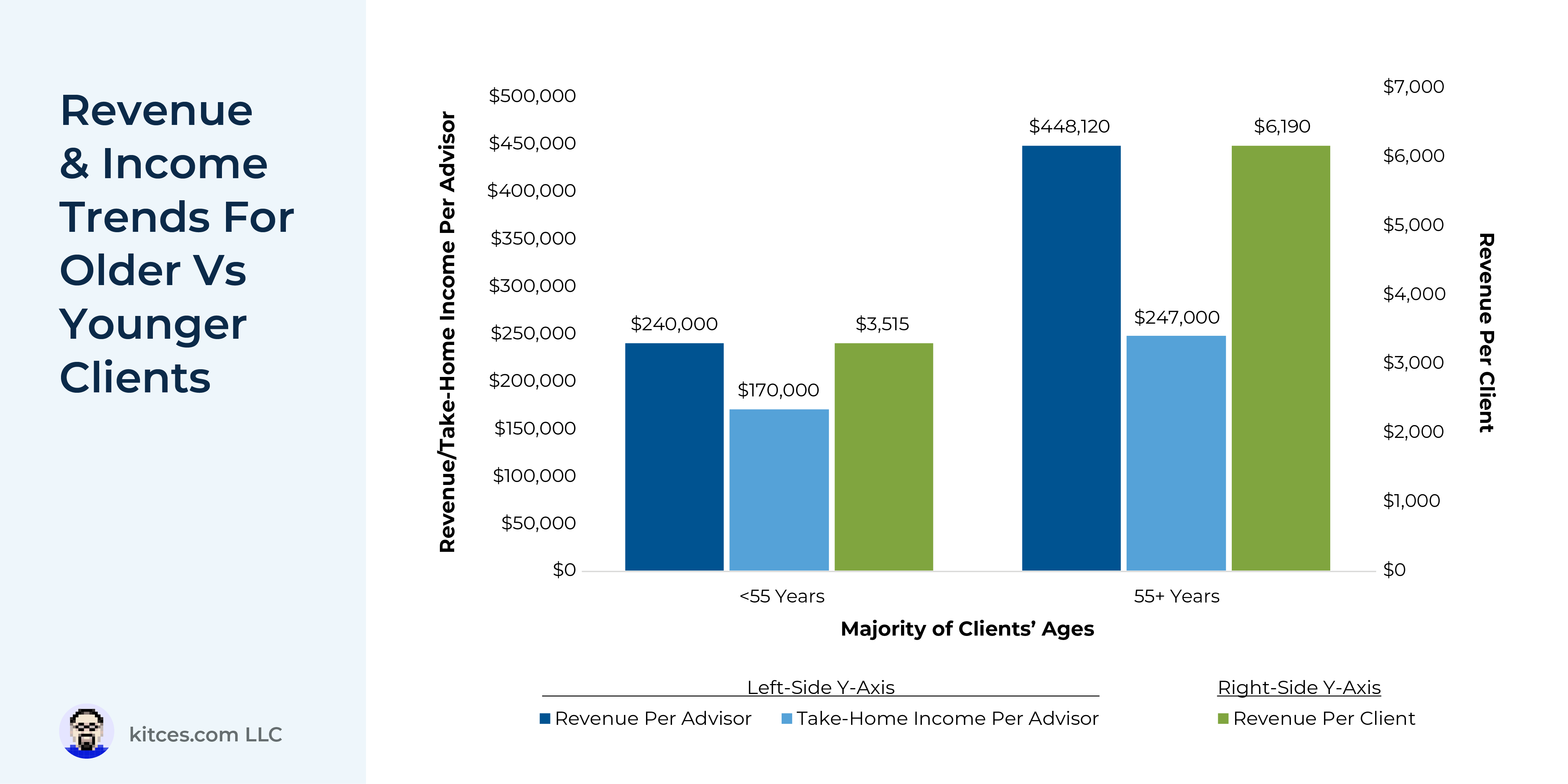
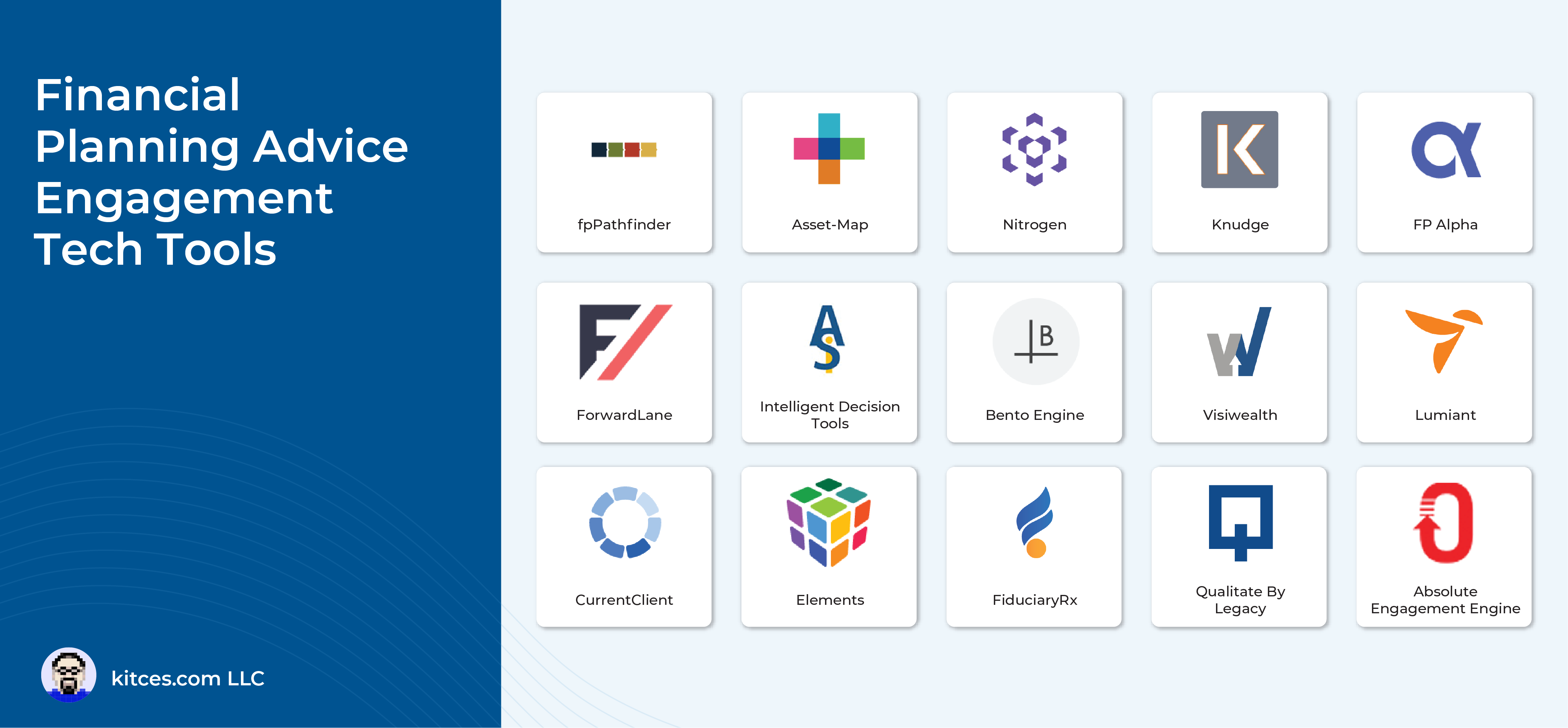
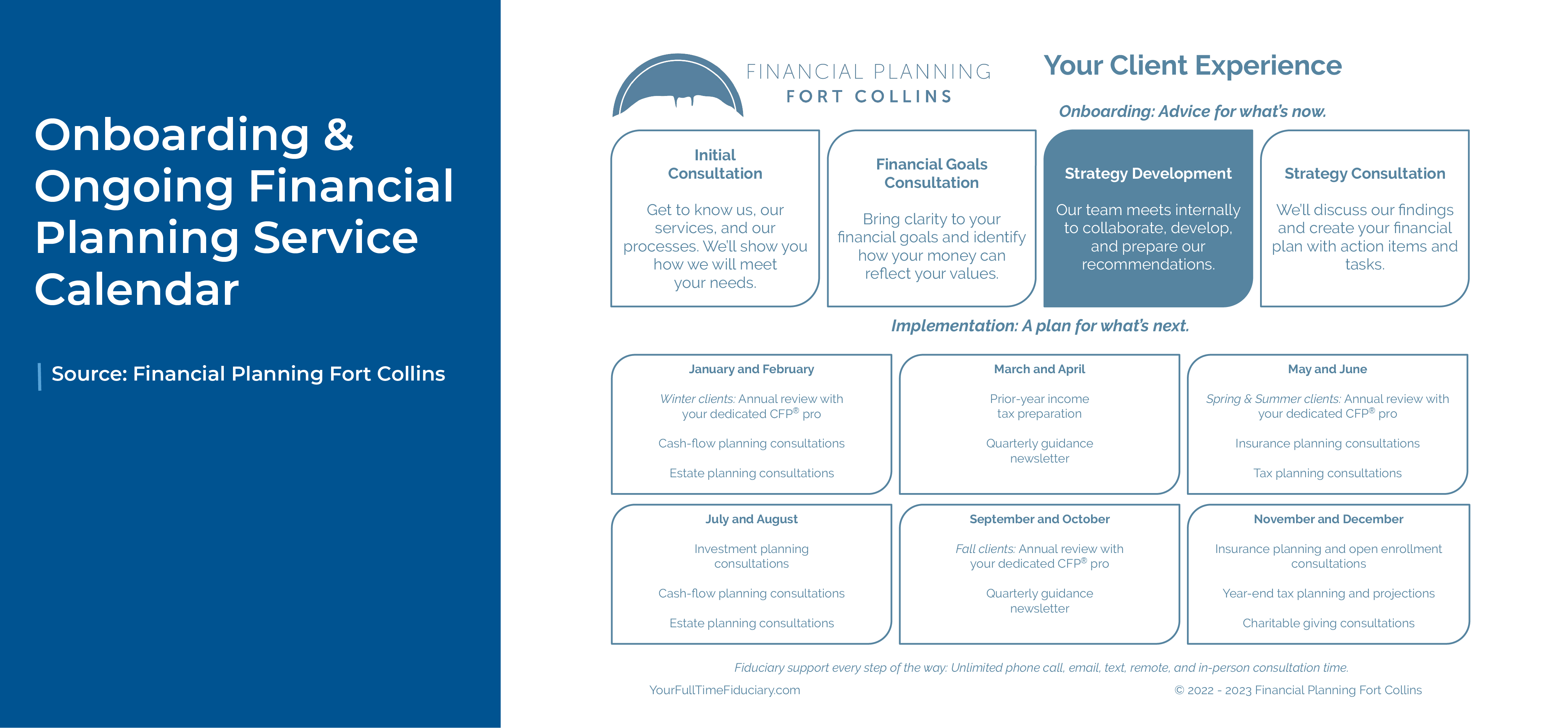
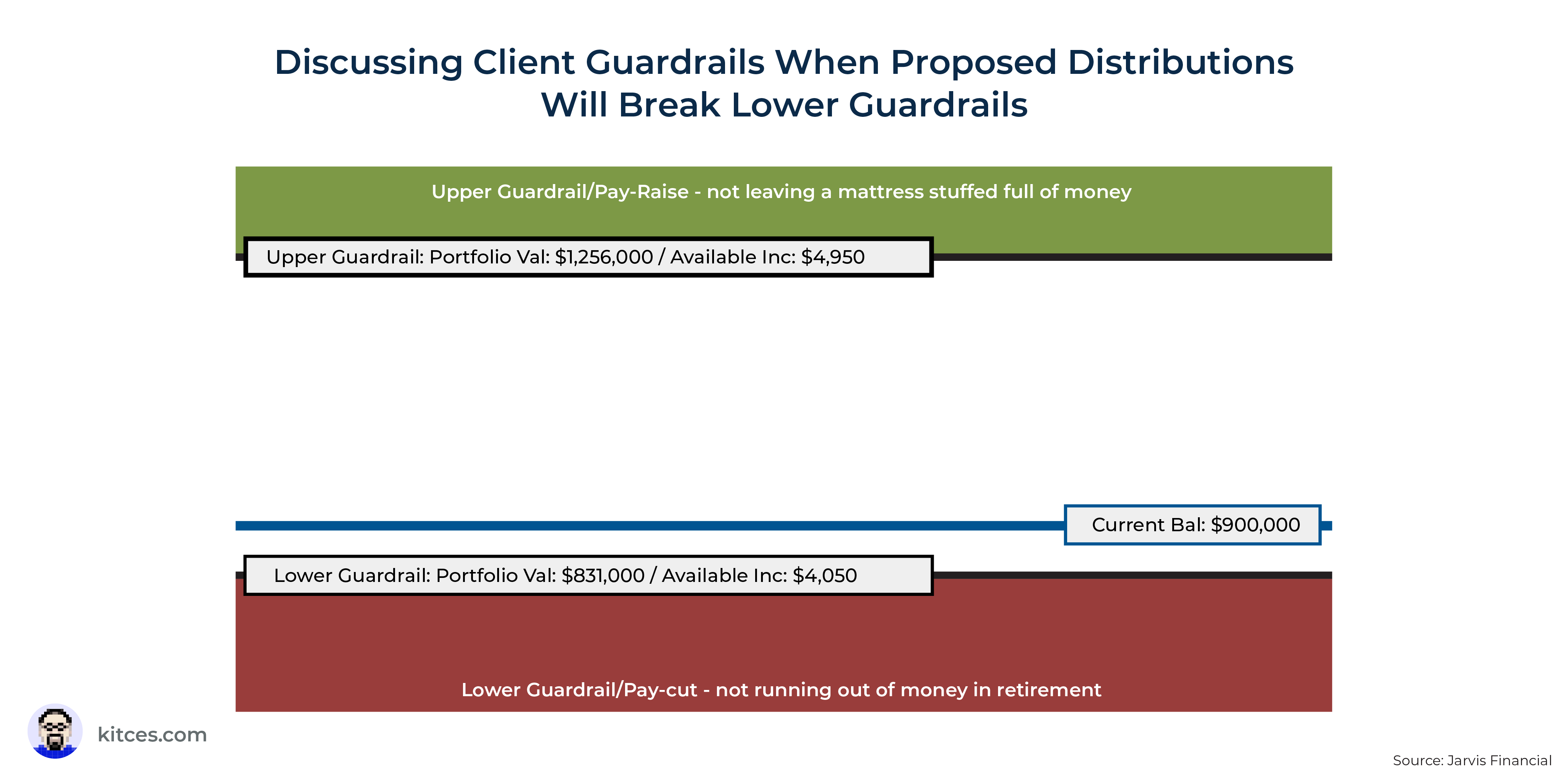
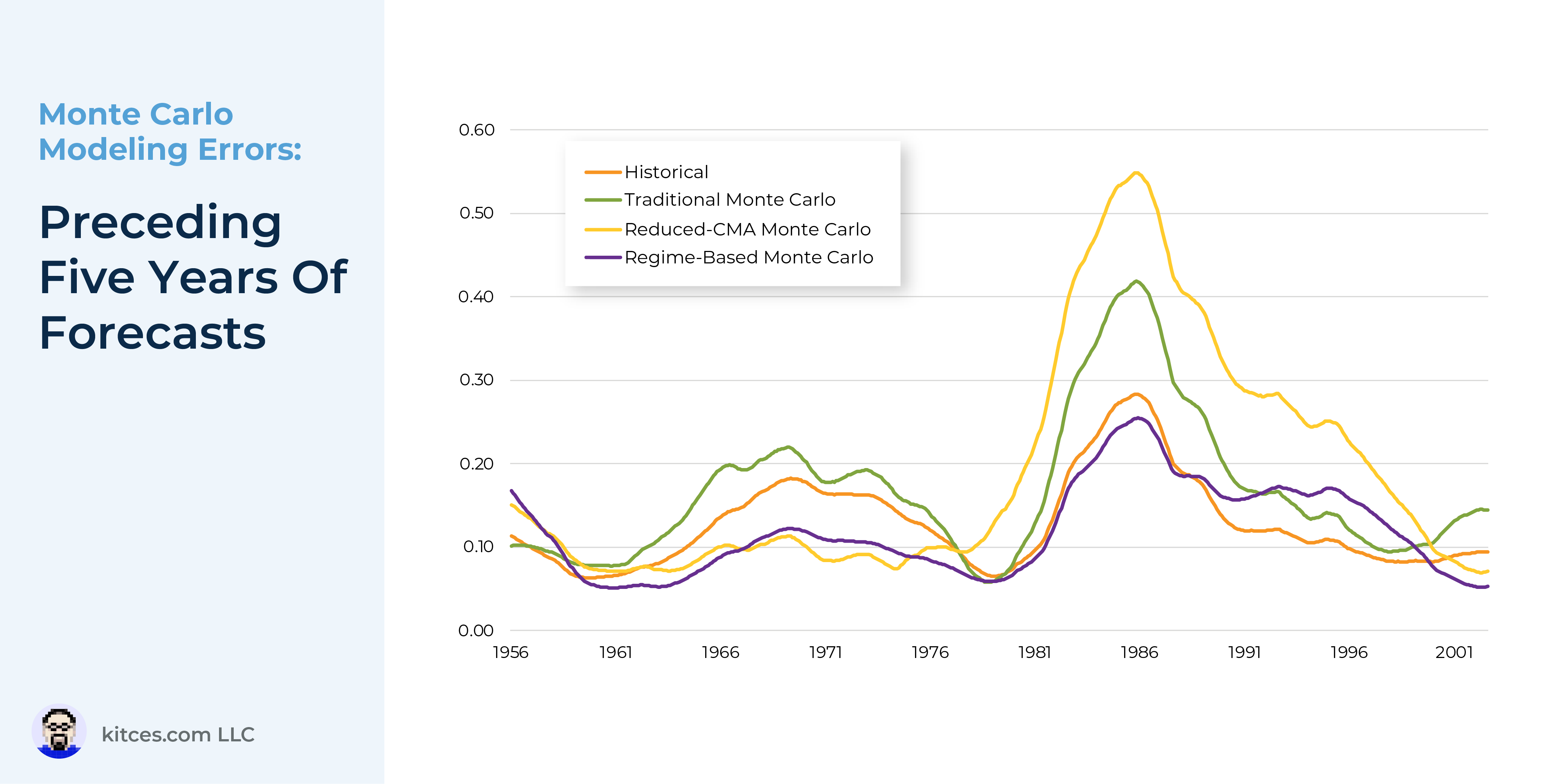
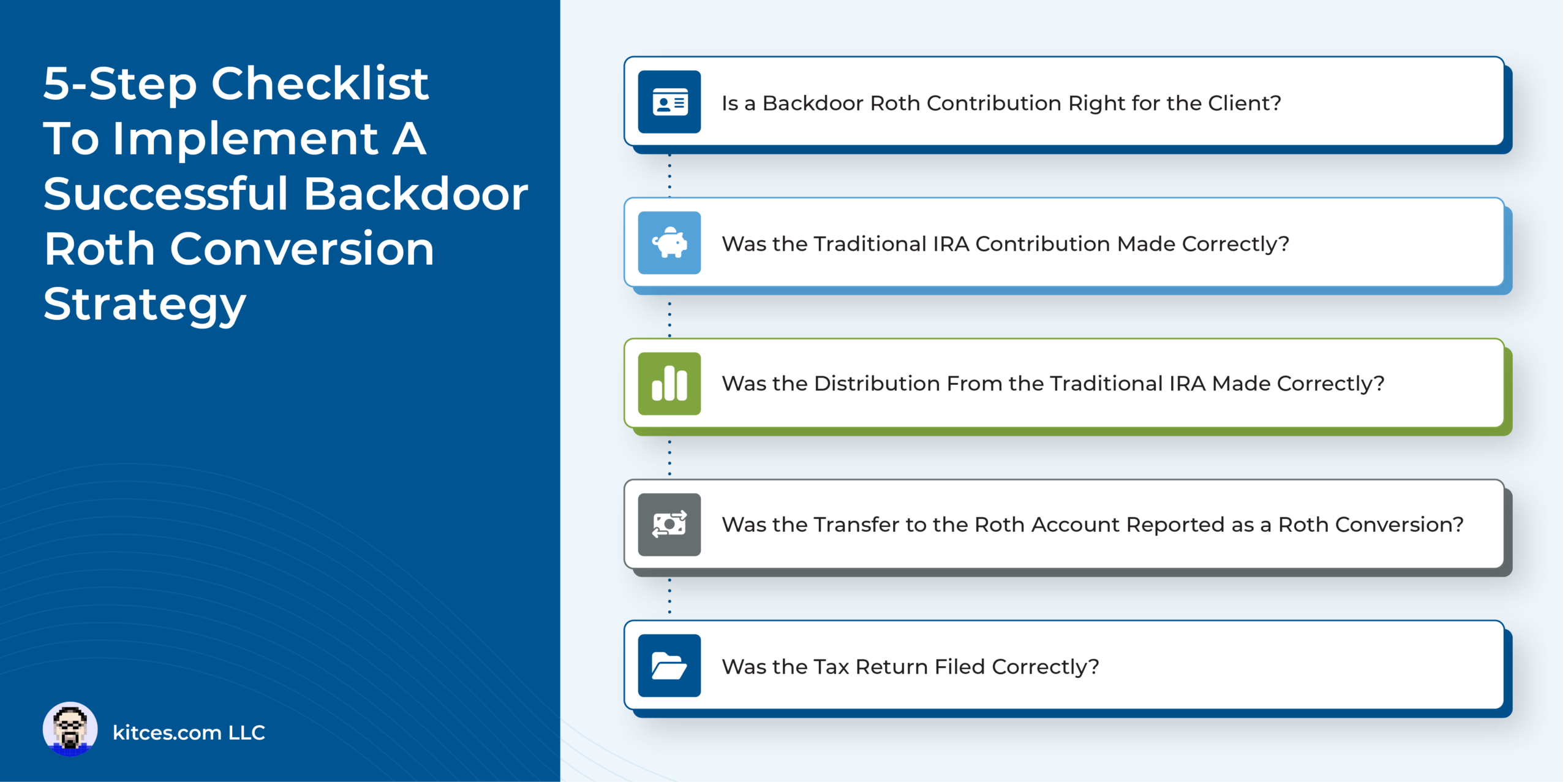
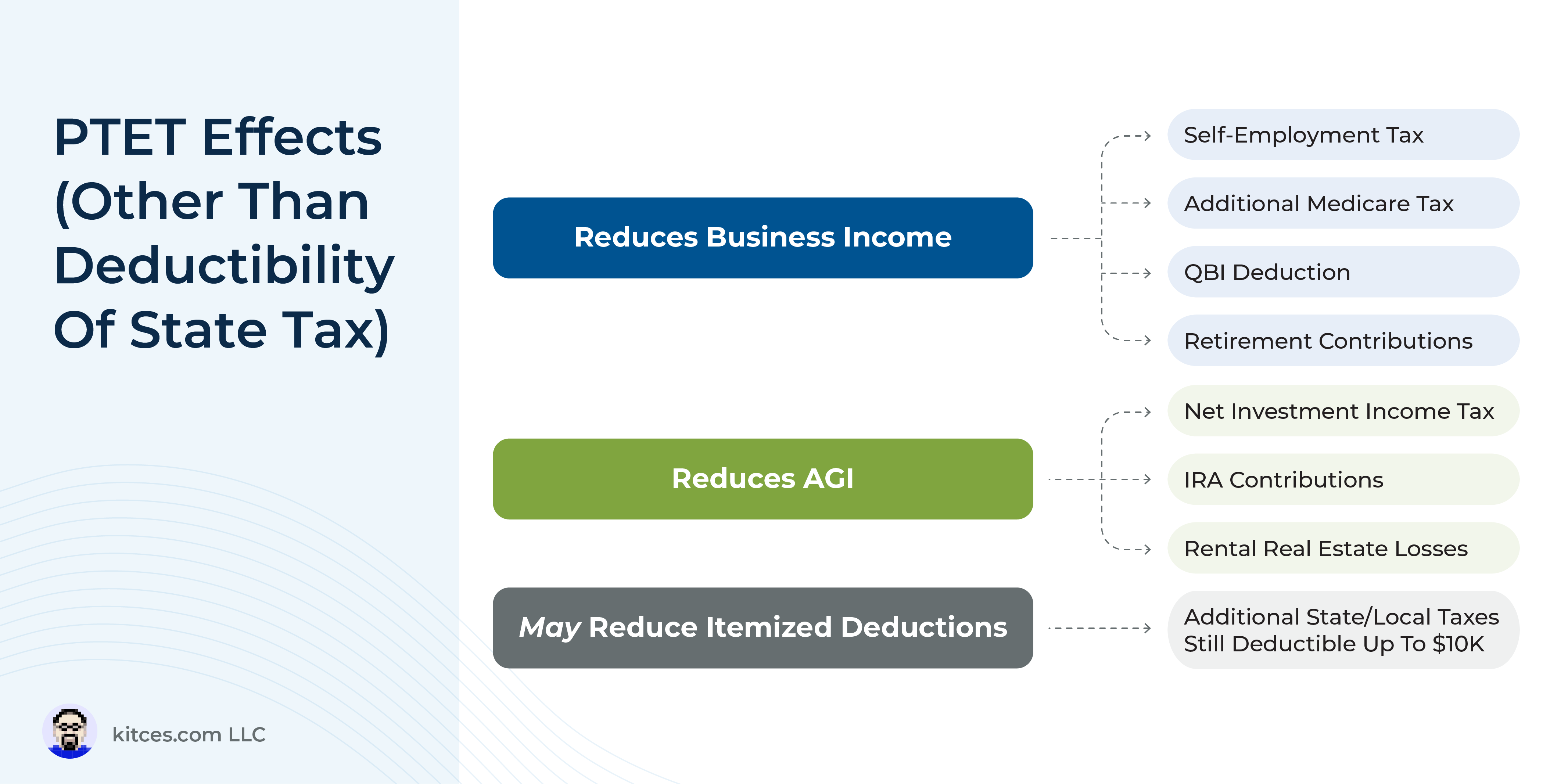
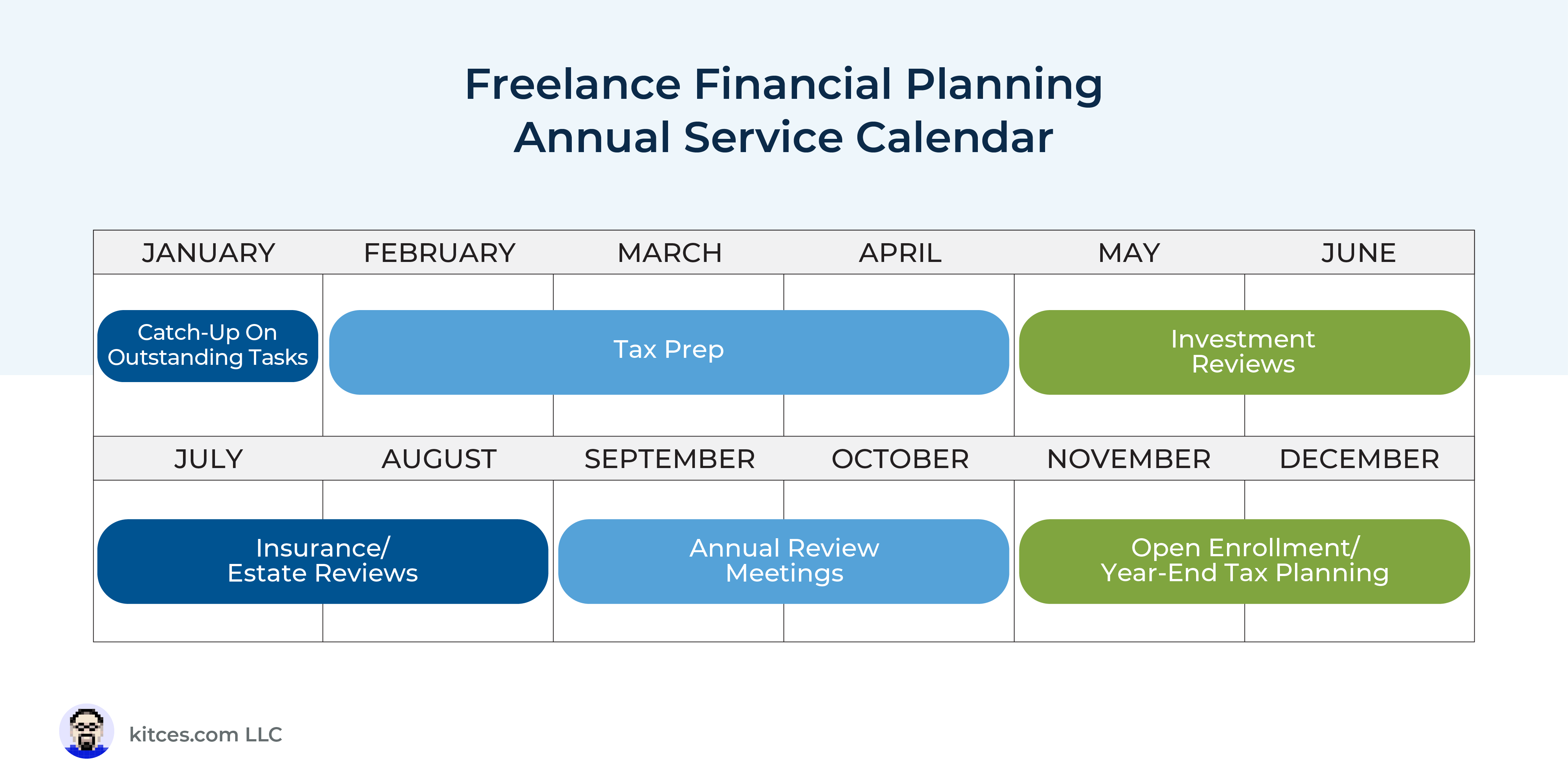
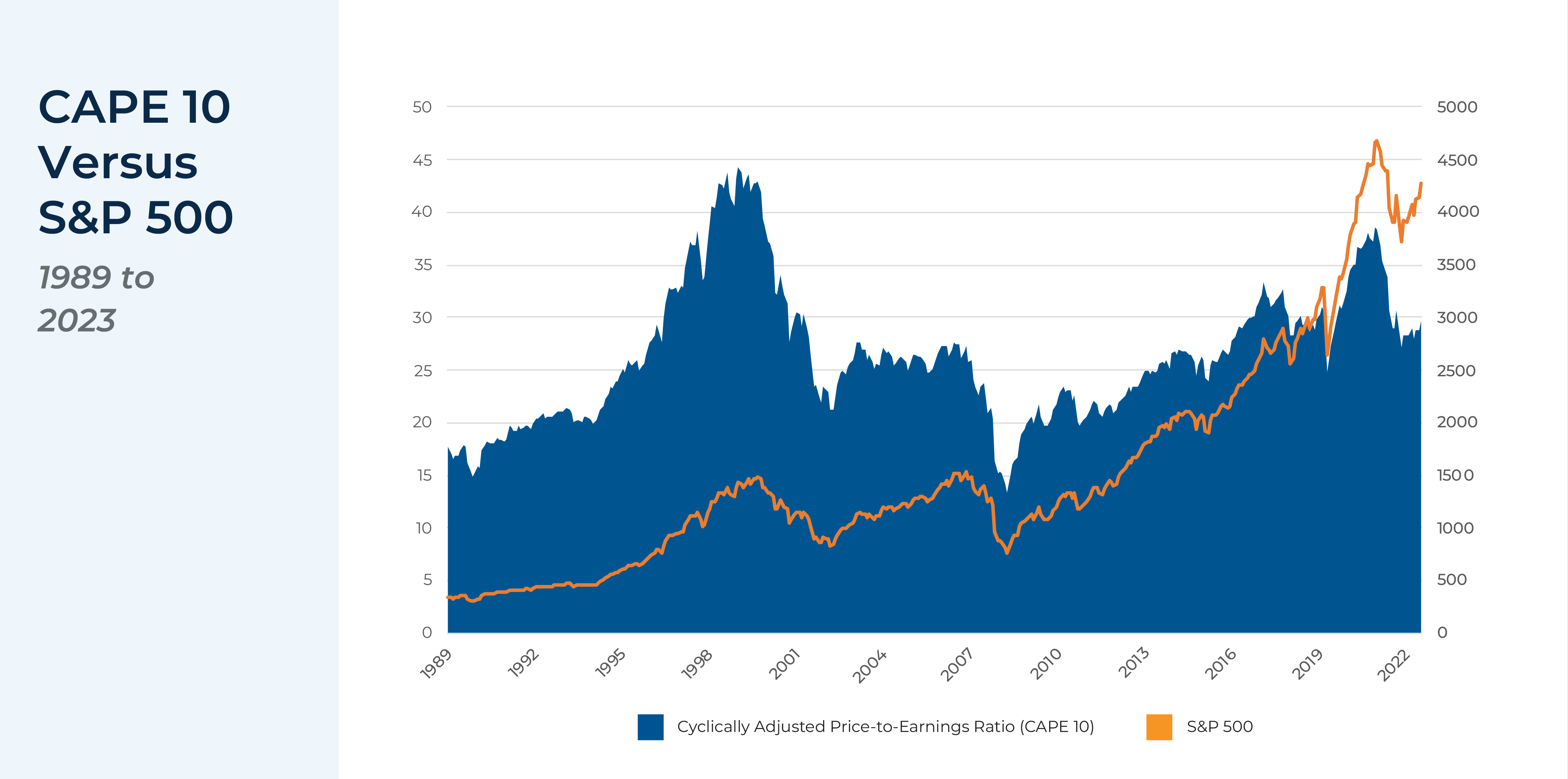
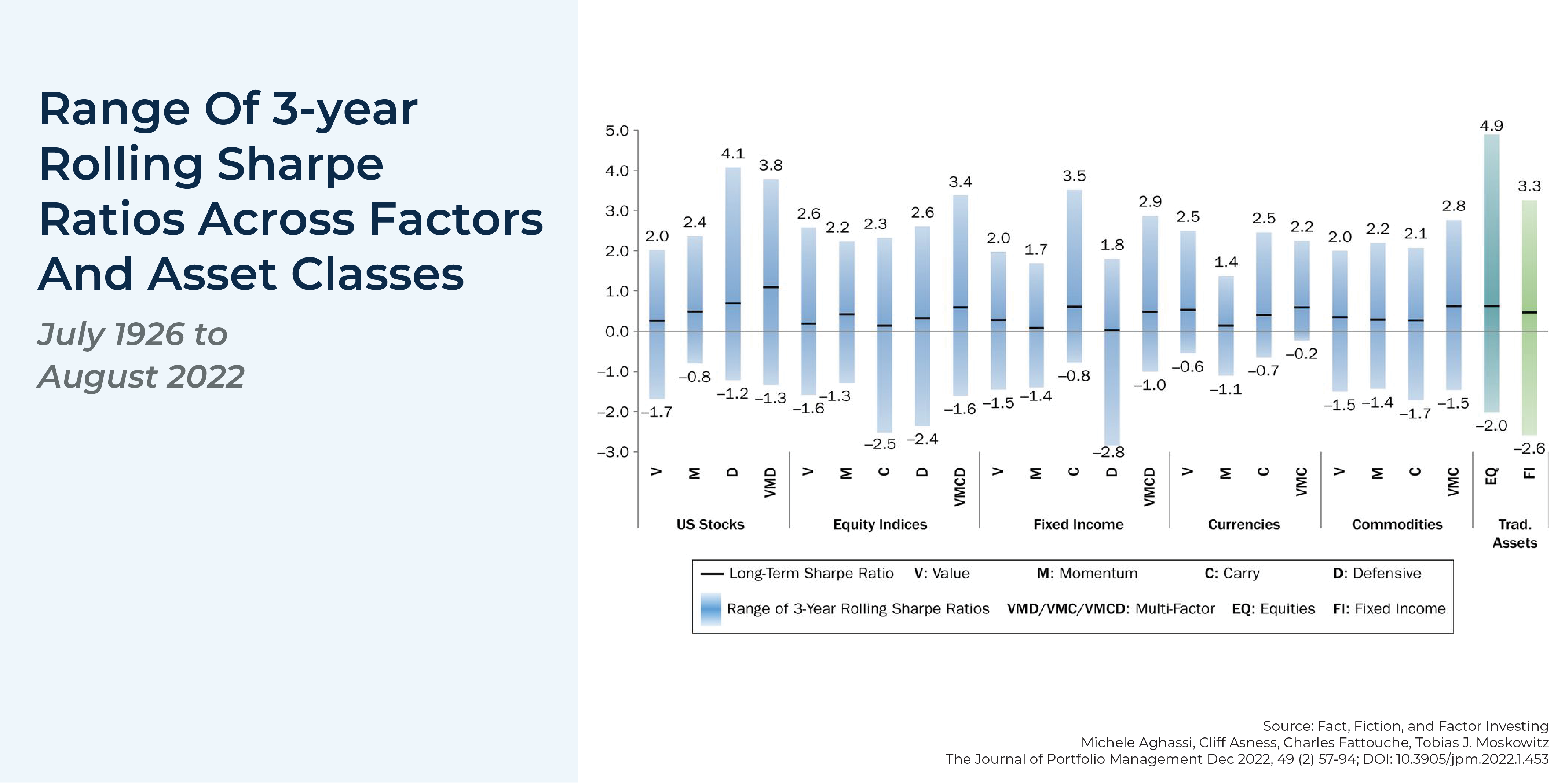
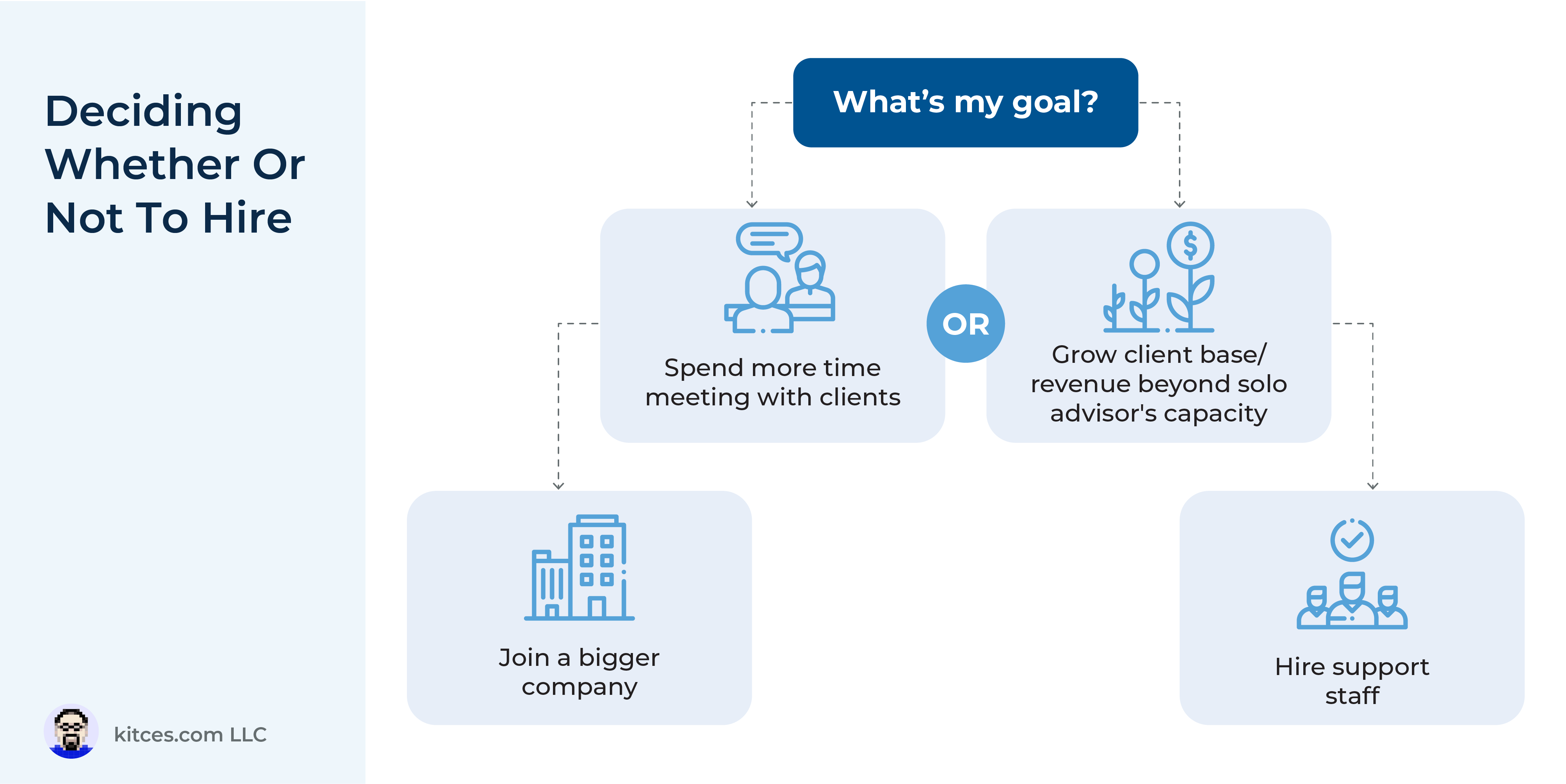
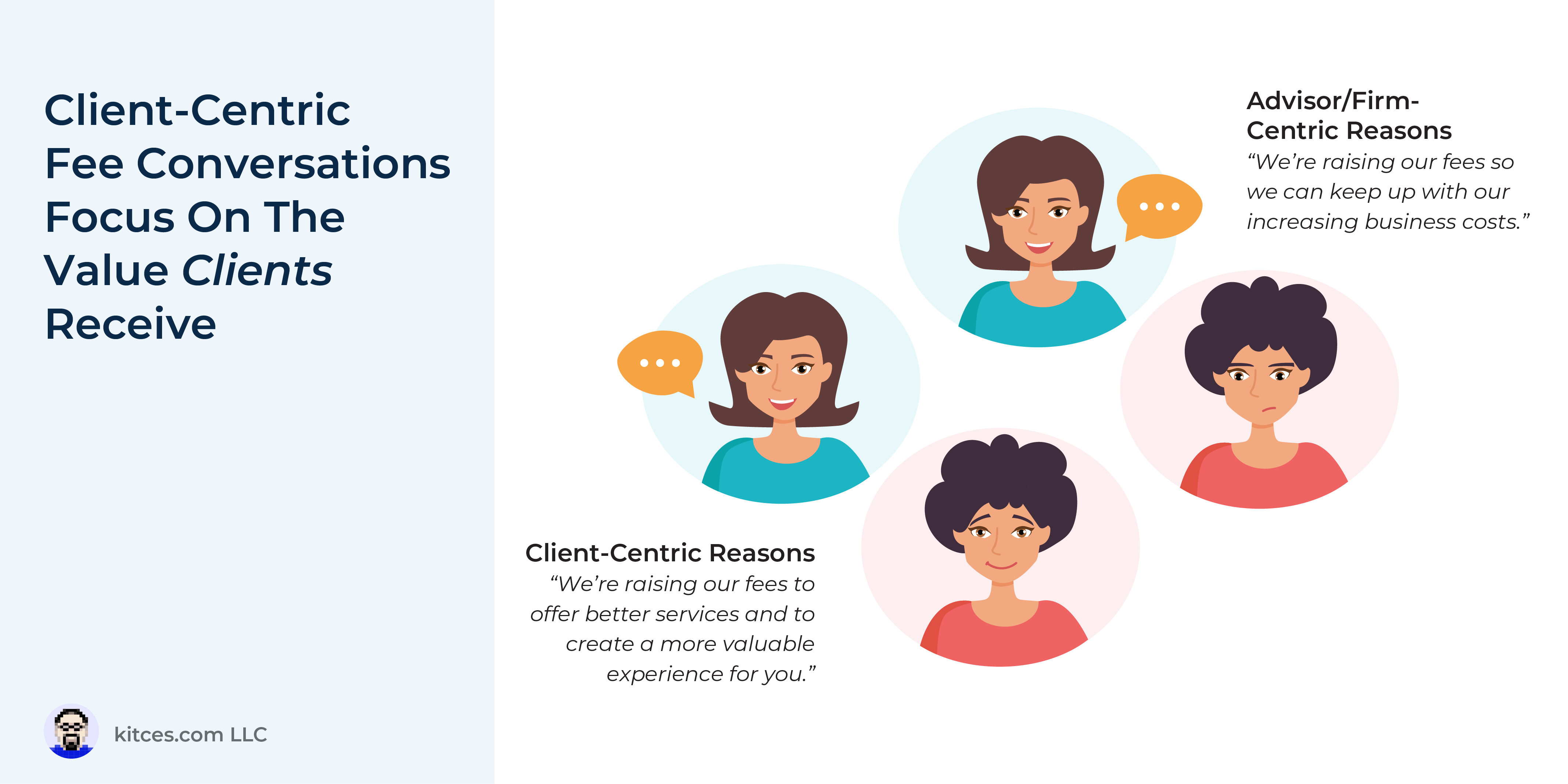
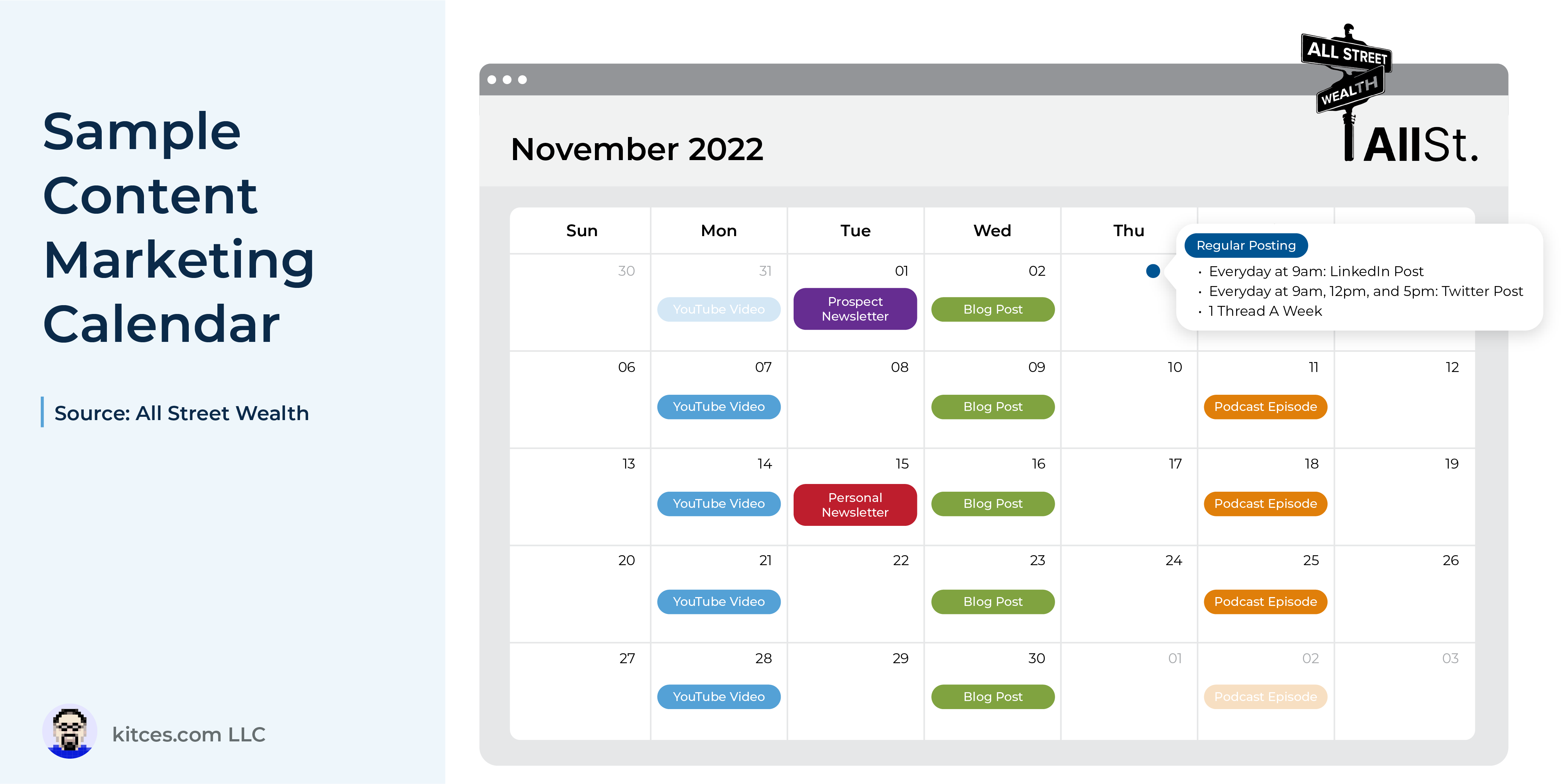
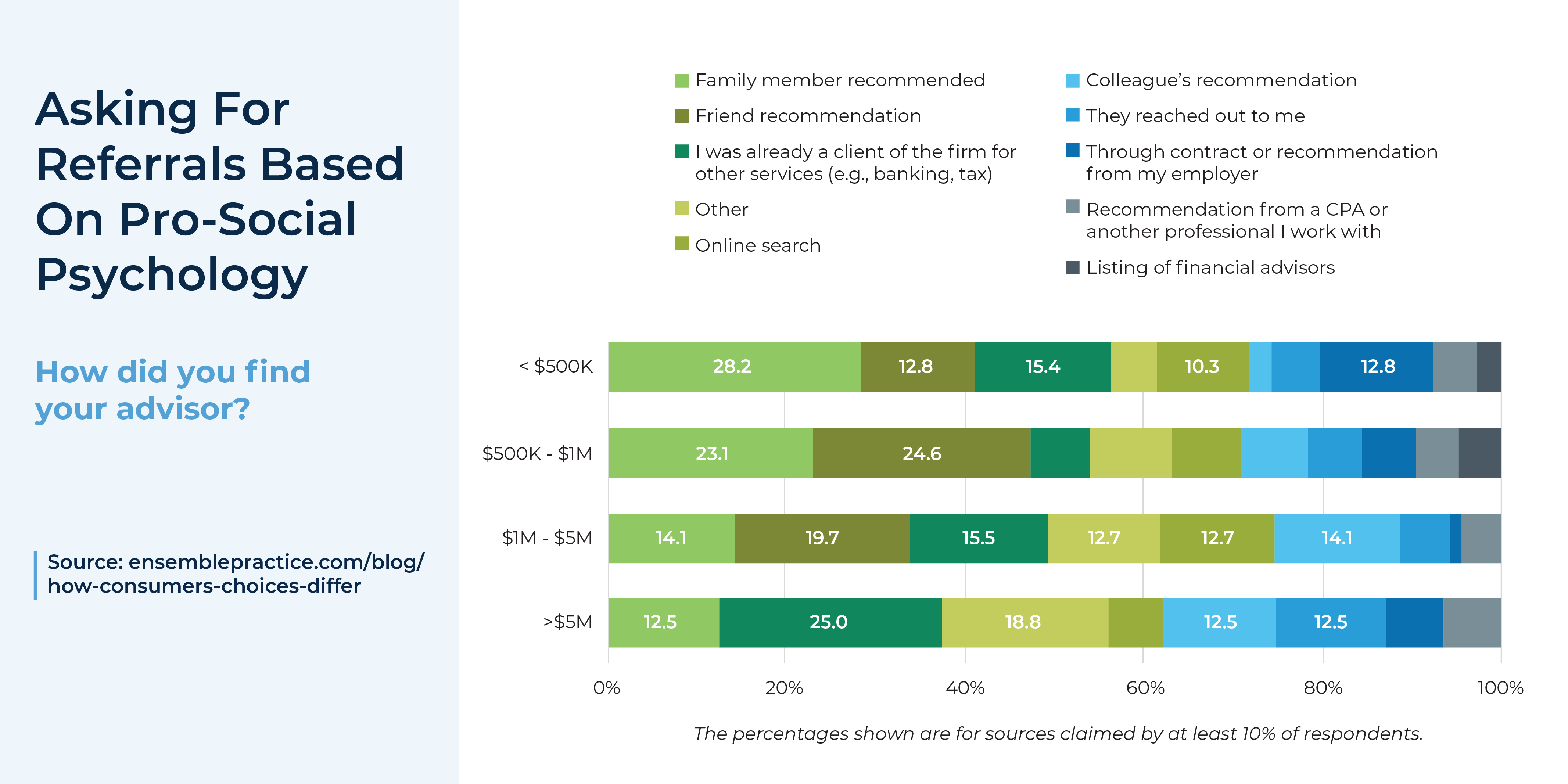

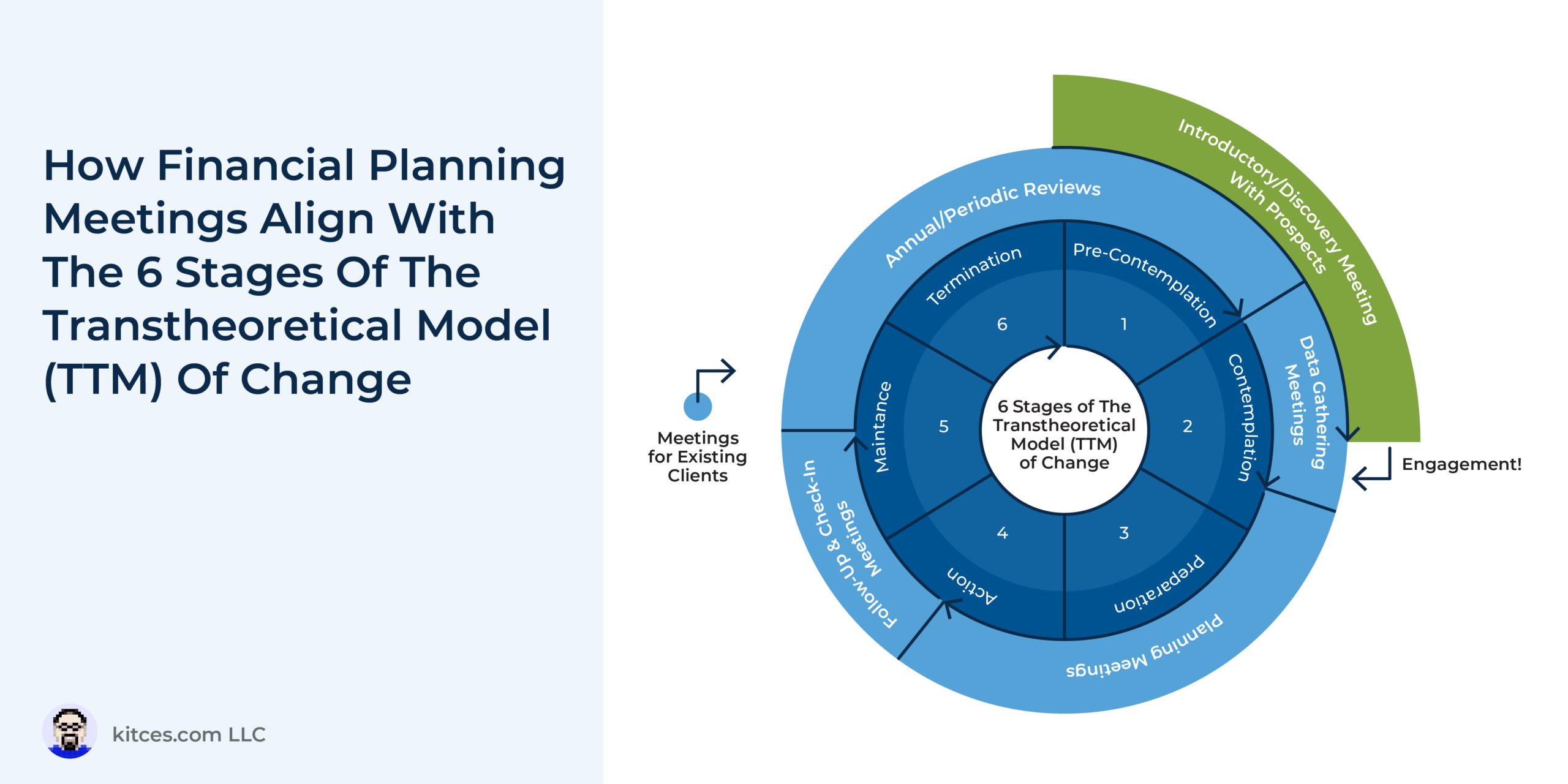
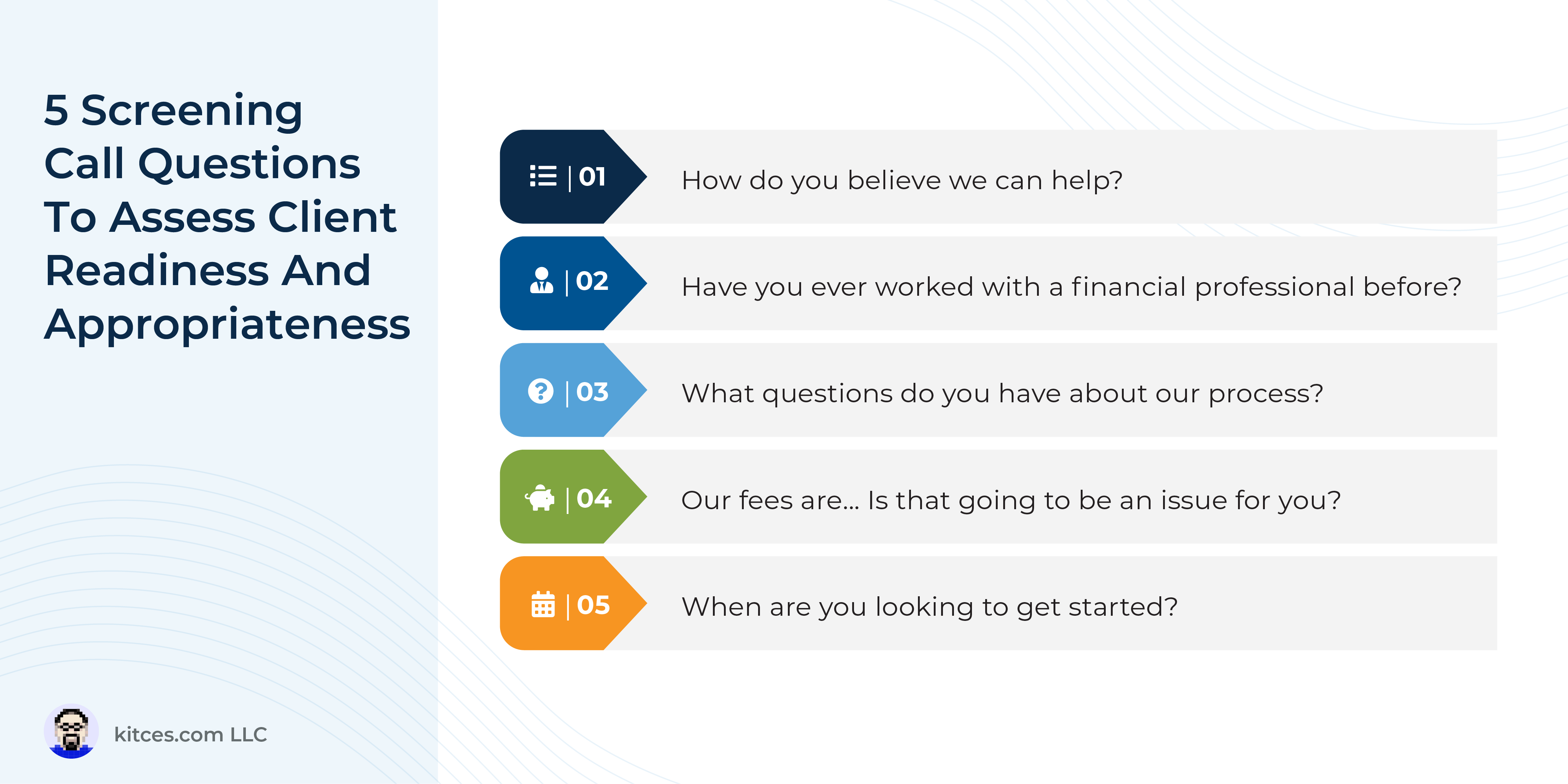
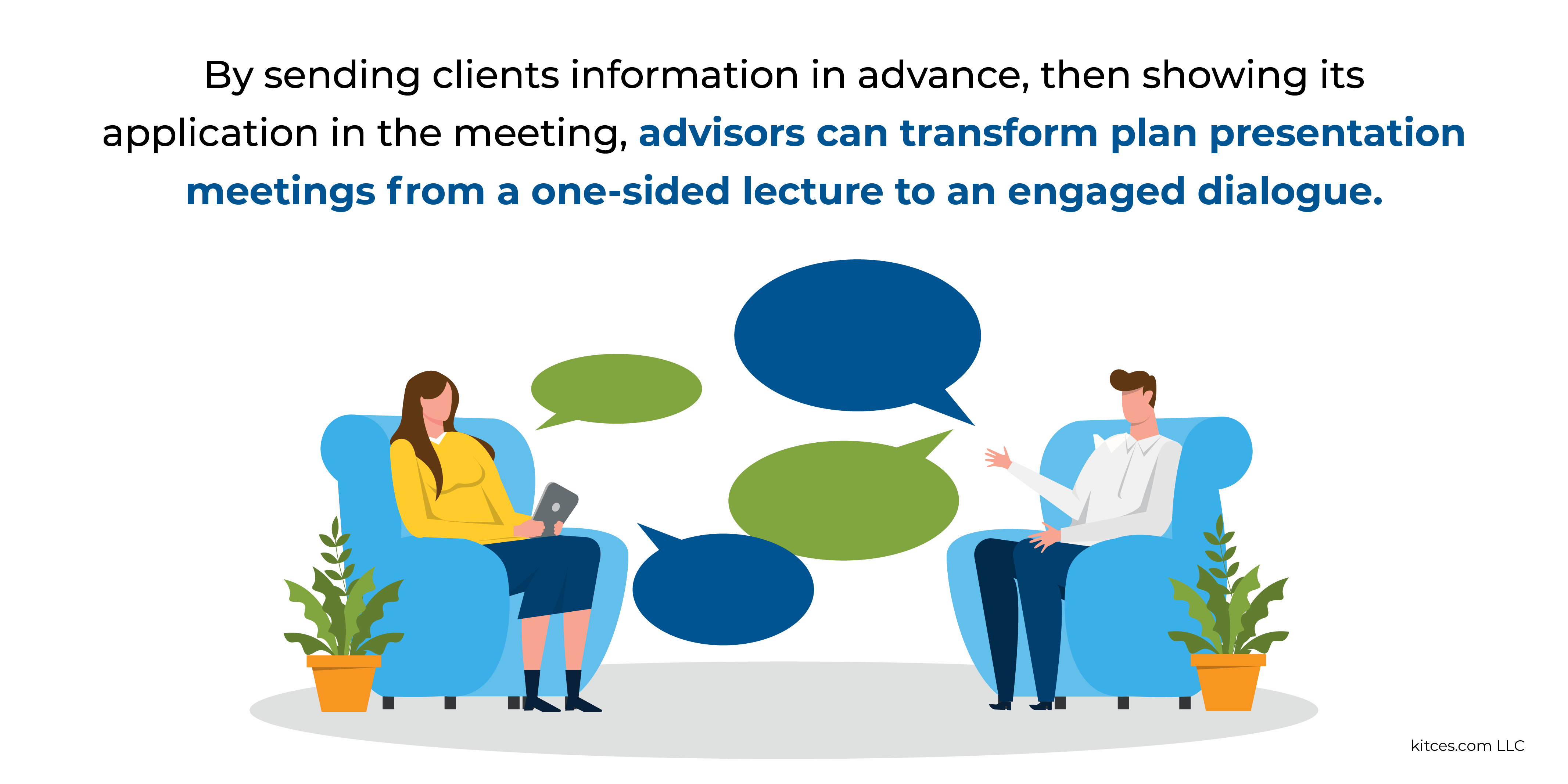
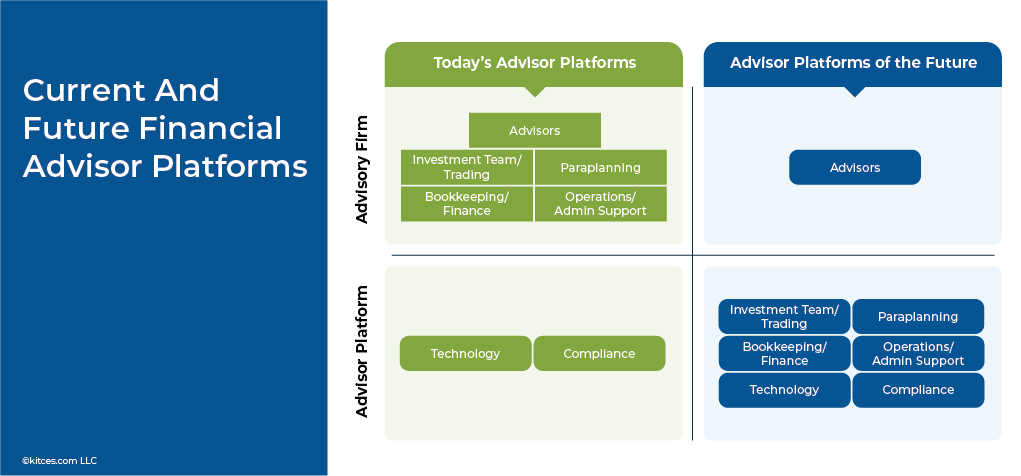
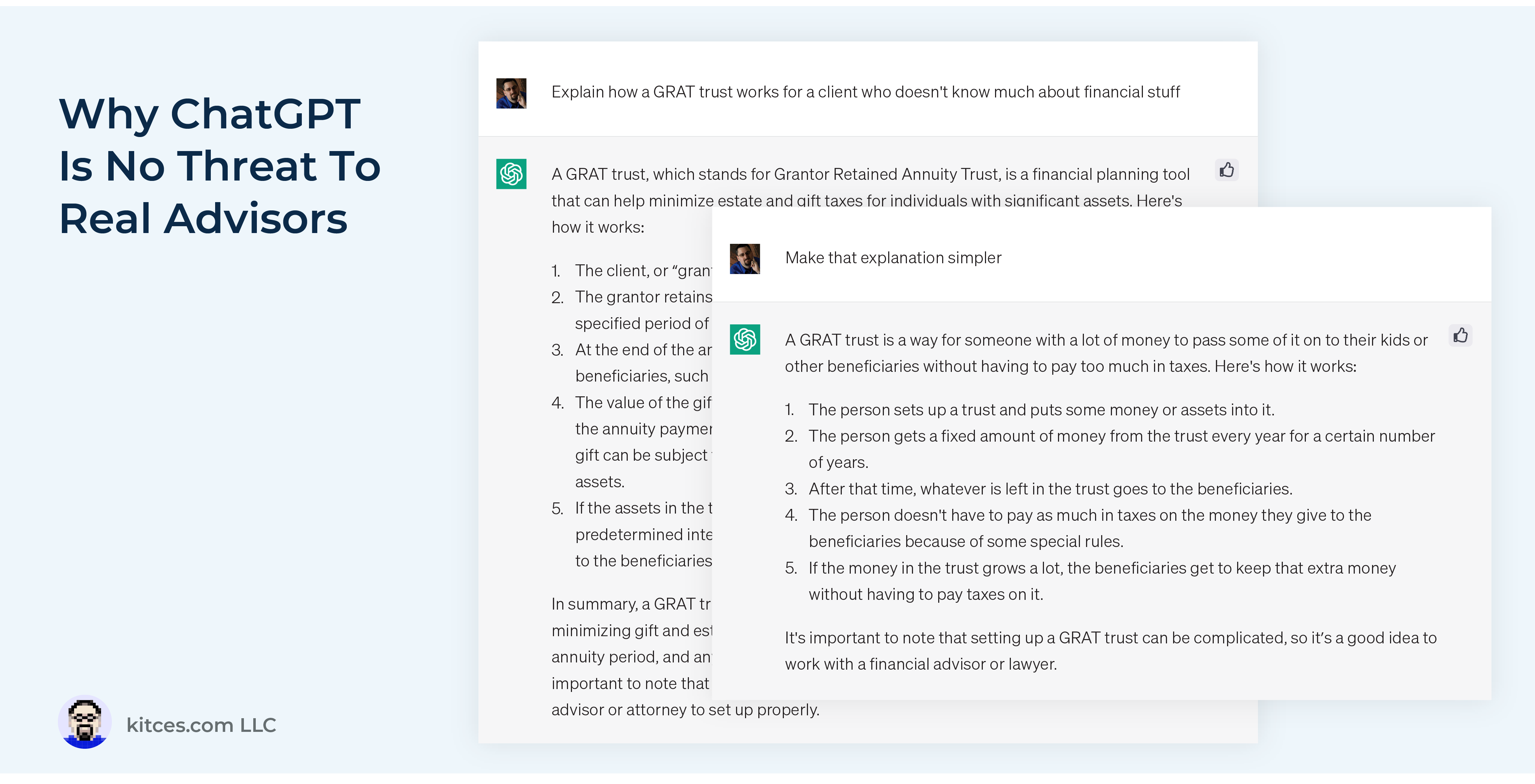
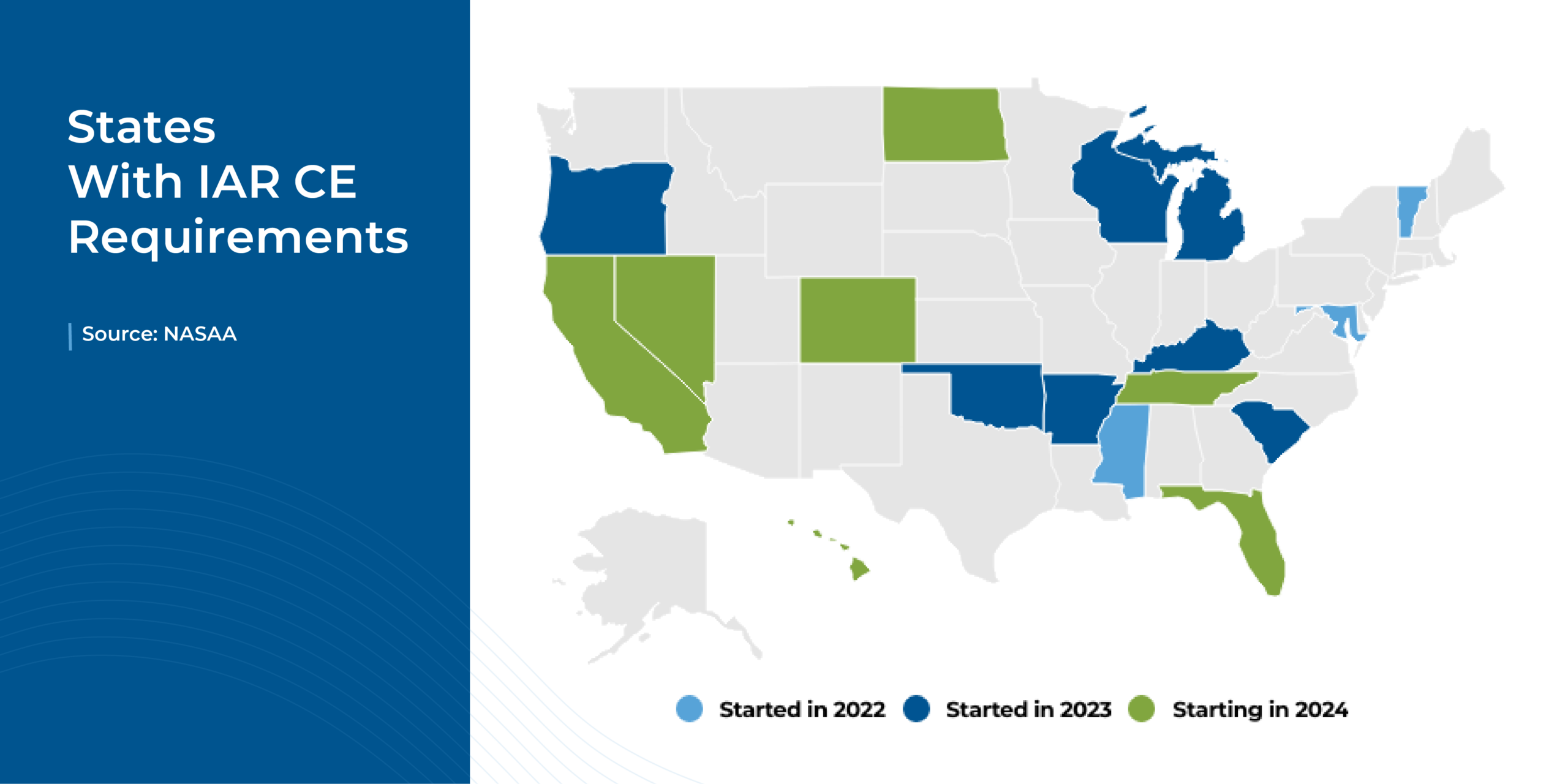
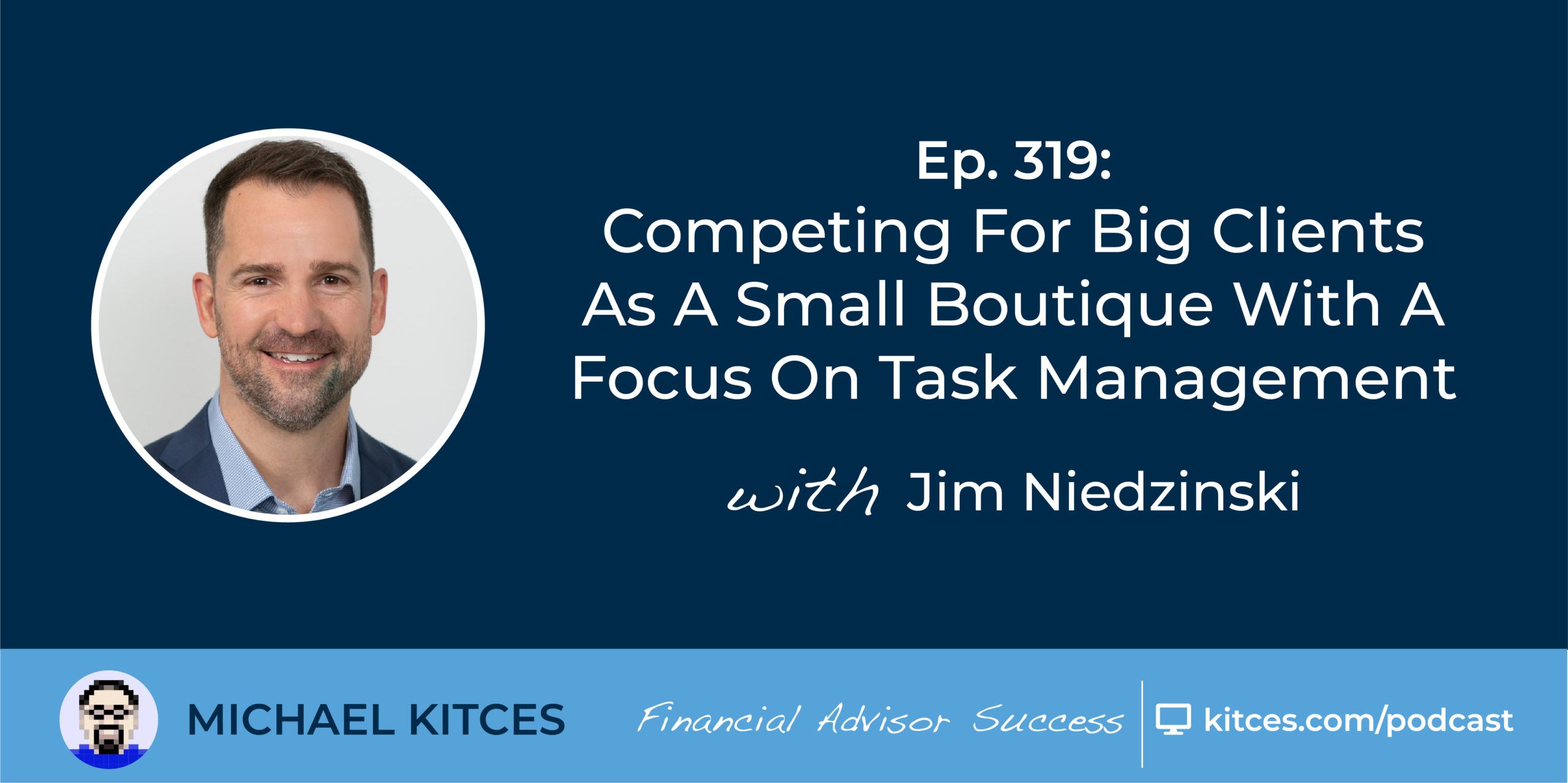
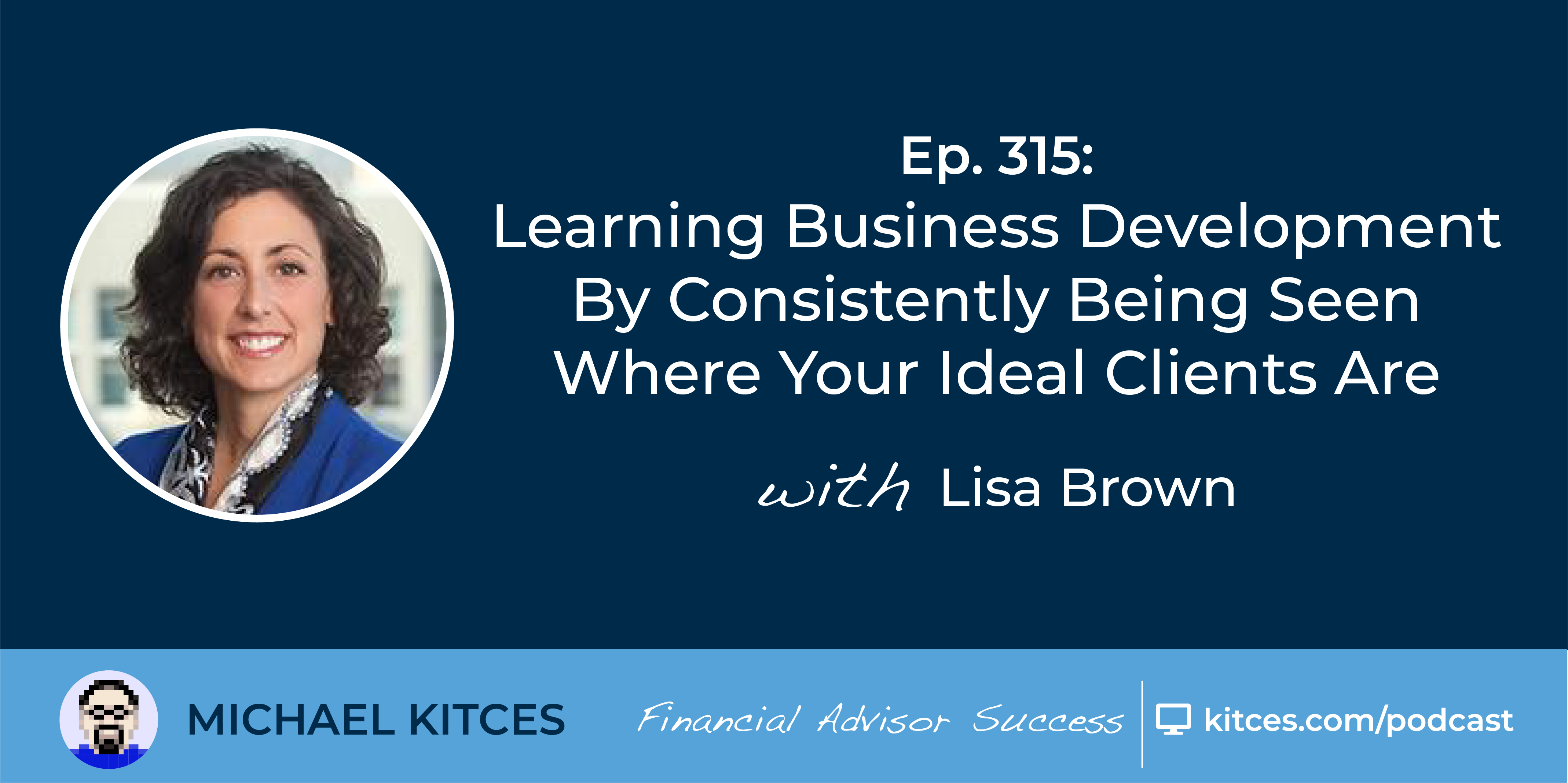
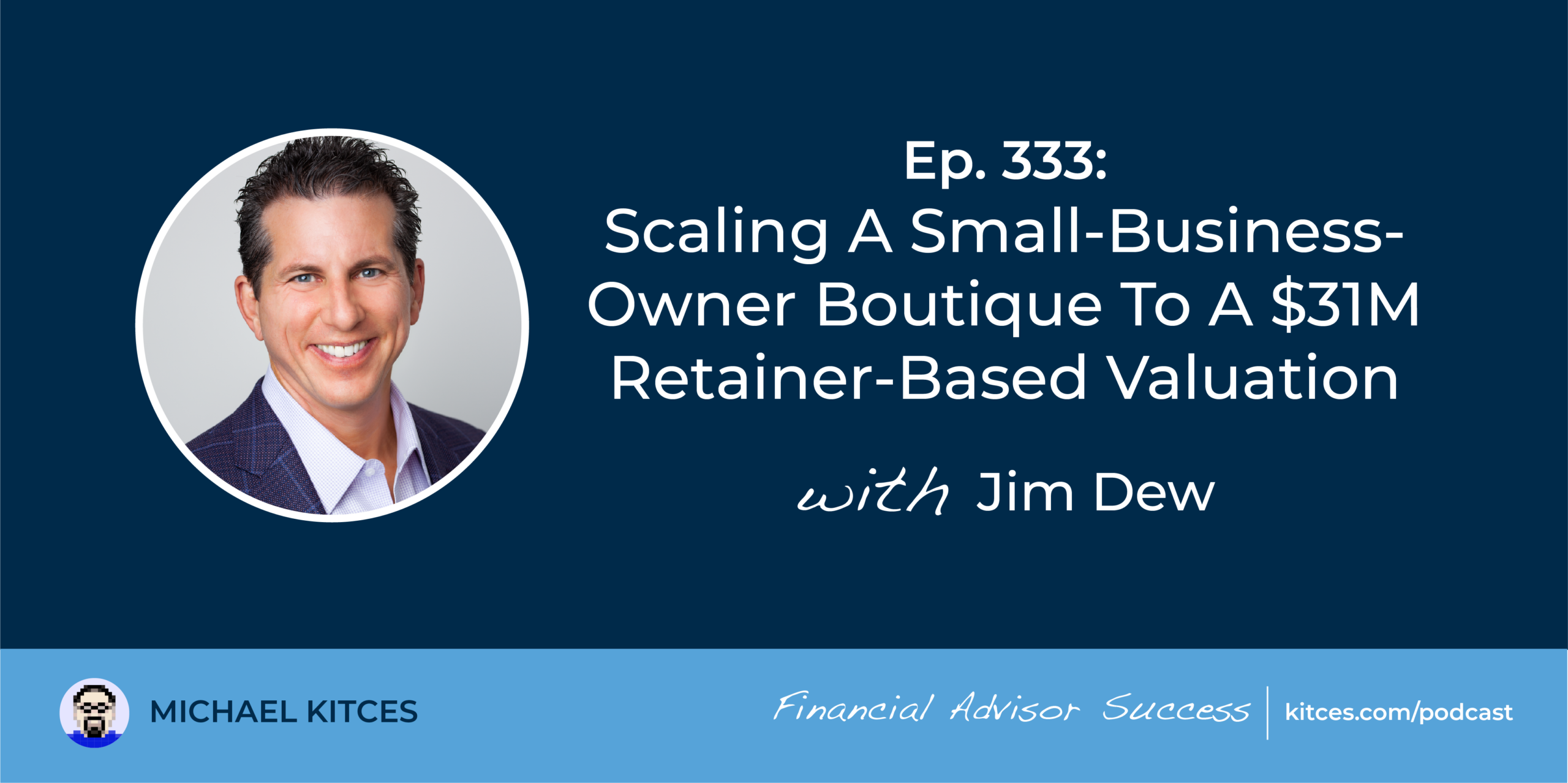
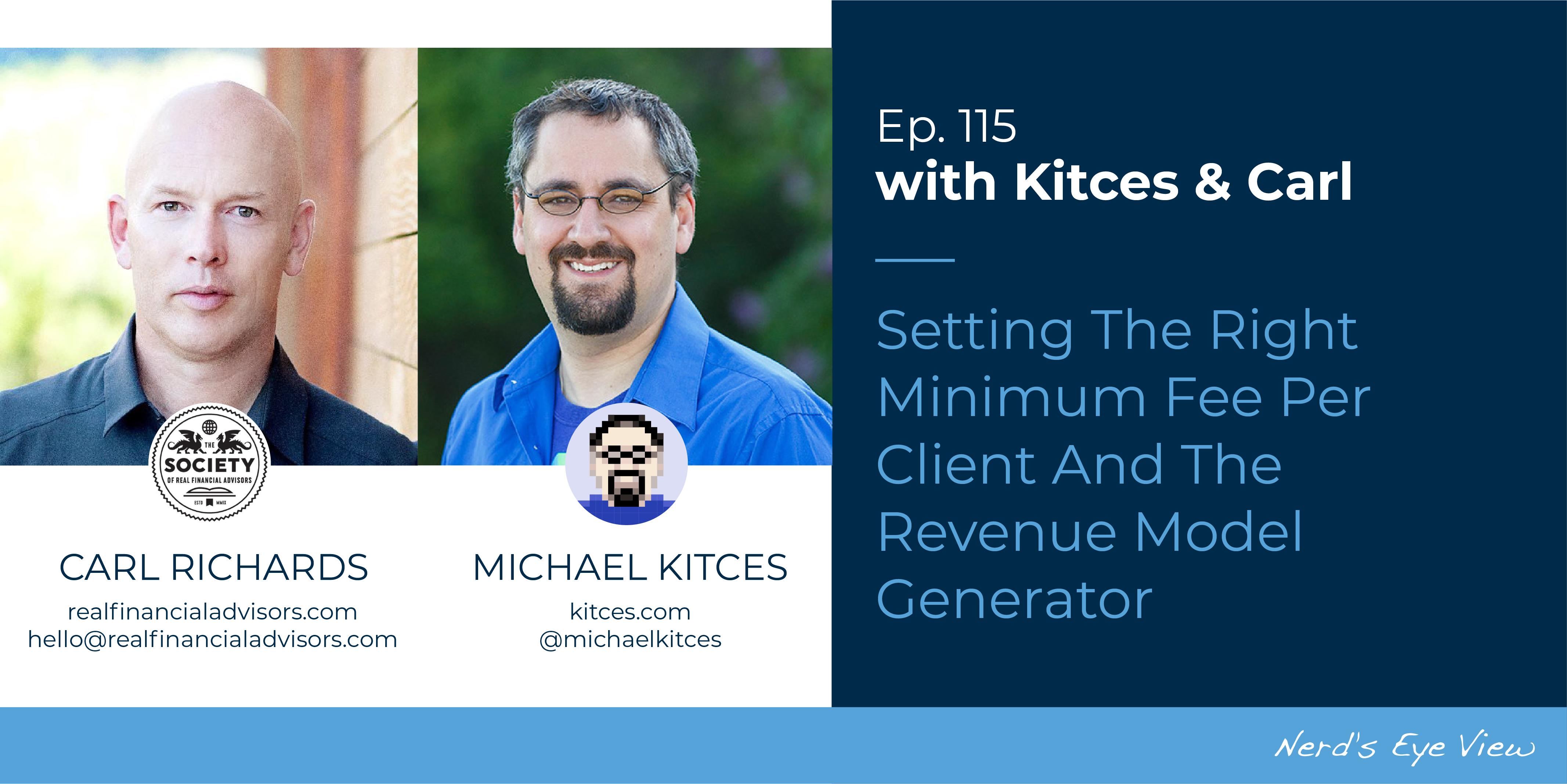
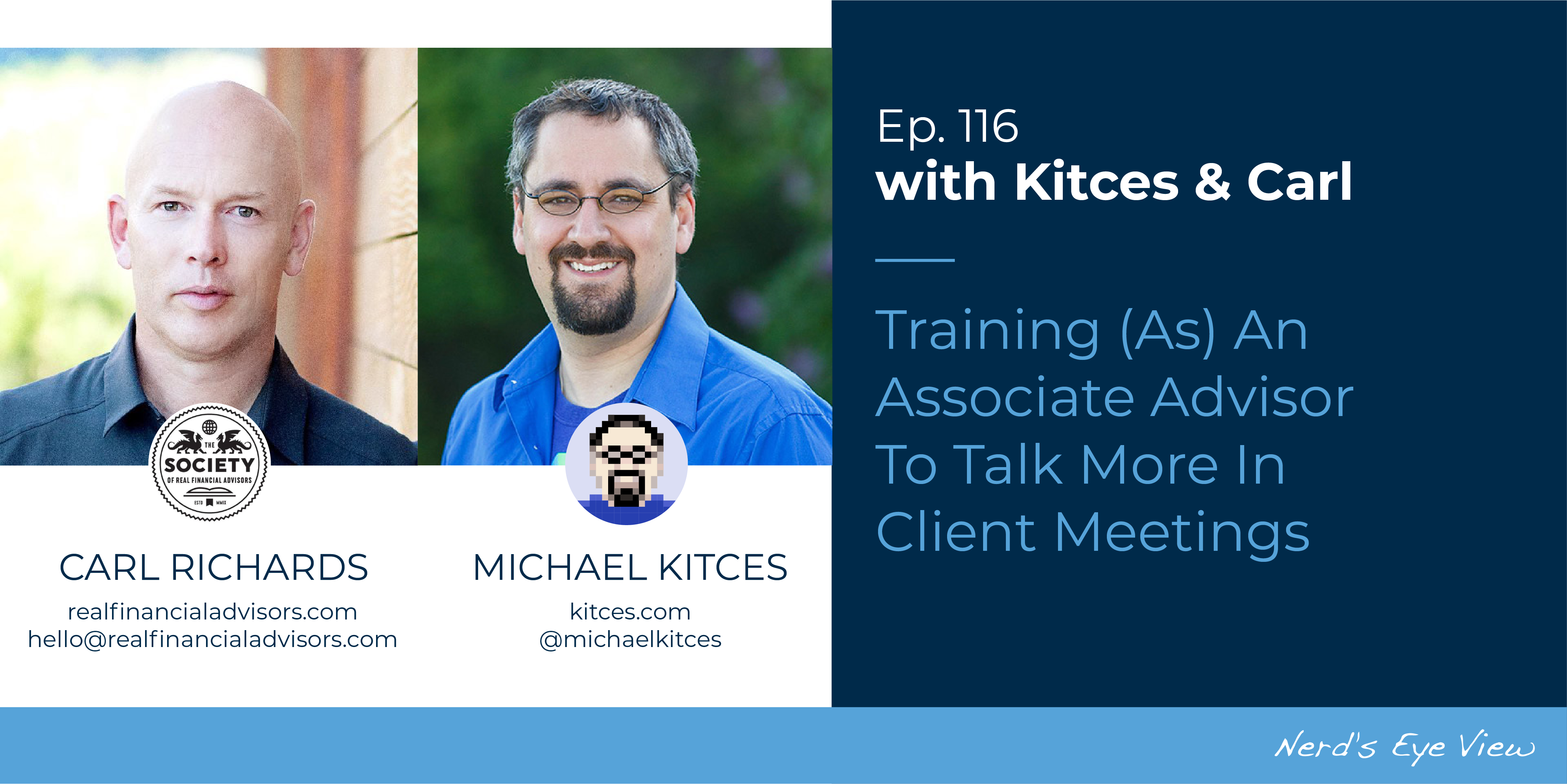
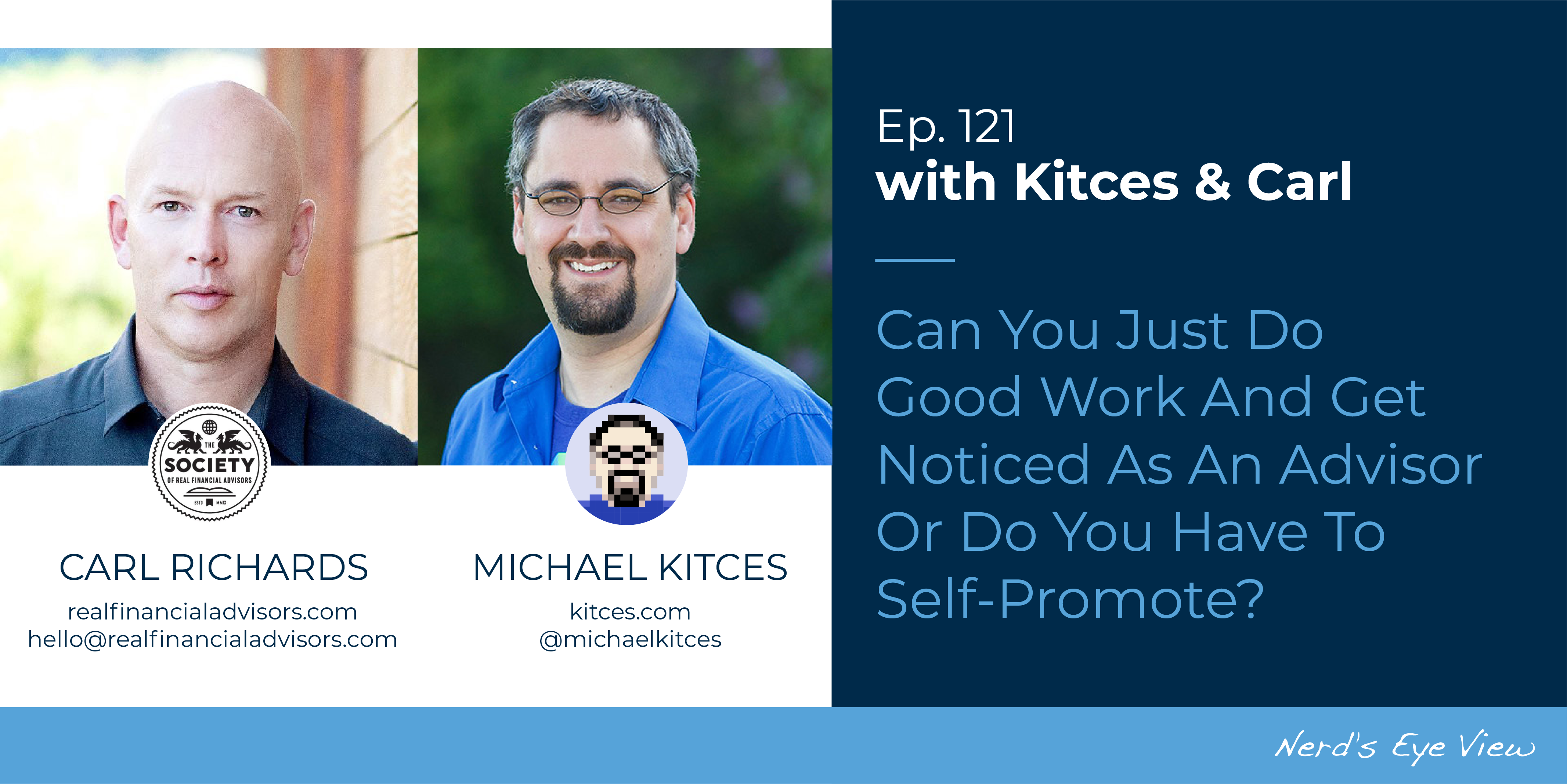



Leave a Reply